To my other GT6
pages
May 2, 2020
Windshield Wiper Motor
GT6 cars came with screen
wipers powered by an electric motor. The Lucas motor was
pretty ubiquitous at the time, being used in a range of British
and other European cars. Lucas actually provided several
variants of the motor over the years. Mine was a 14W, a
two-speed model with automatic arm parking.
I guess can't blame the 51 year old motor for looking dirty and
tired. Tested from a 12 volt power supply, it didn't run.
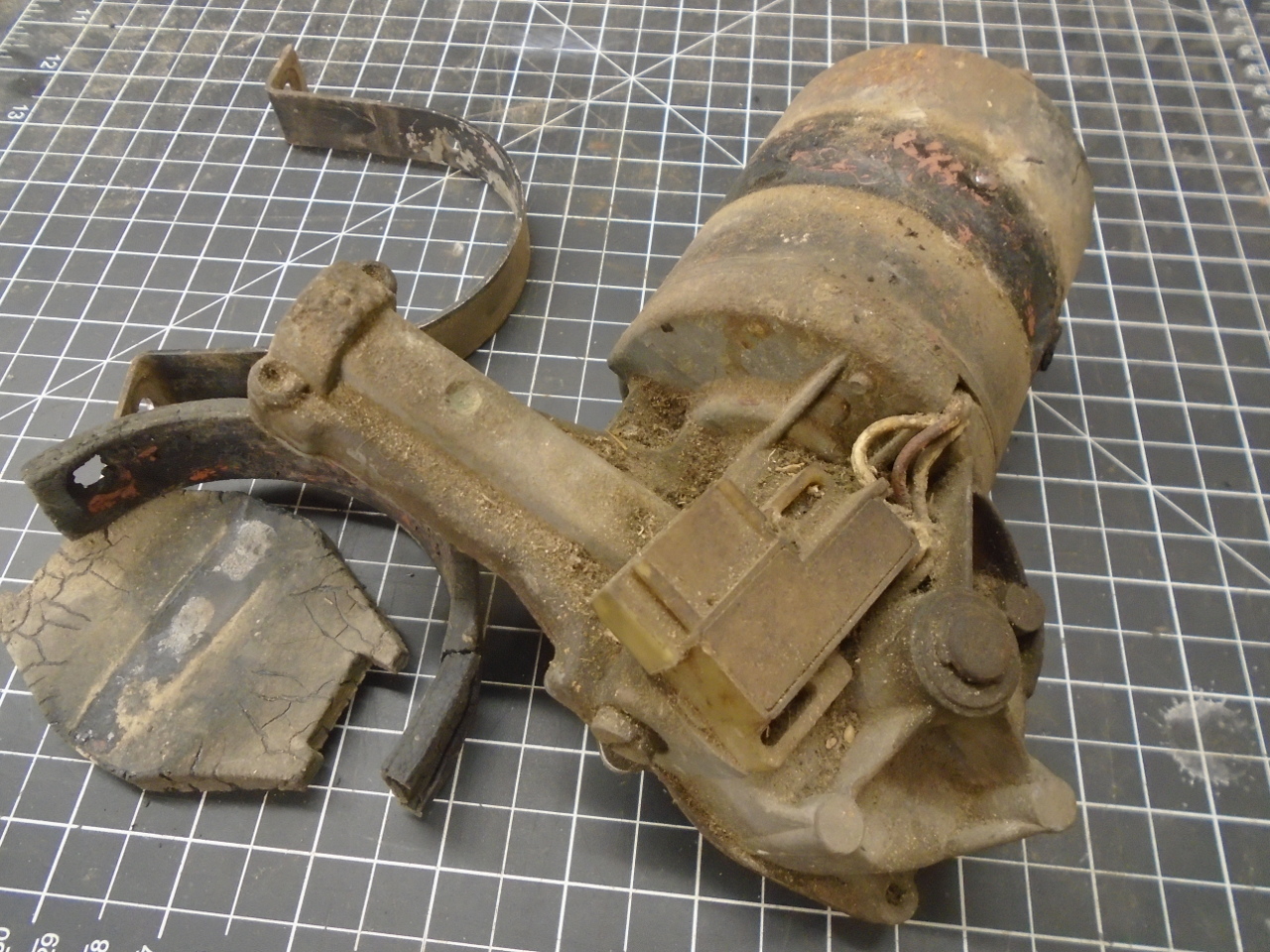
I cleaned the grime from the outside, and opened up the
gearbox. Speed reduction is by means of a worm gear with a
ratio of 46:1 if I counted the teeth correctly.. It was
cleaner inside, but the grease was pretty stiff.
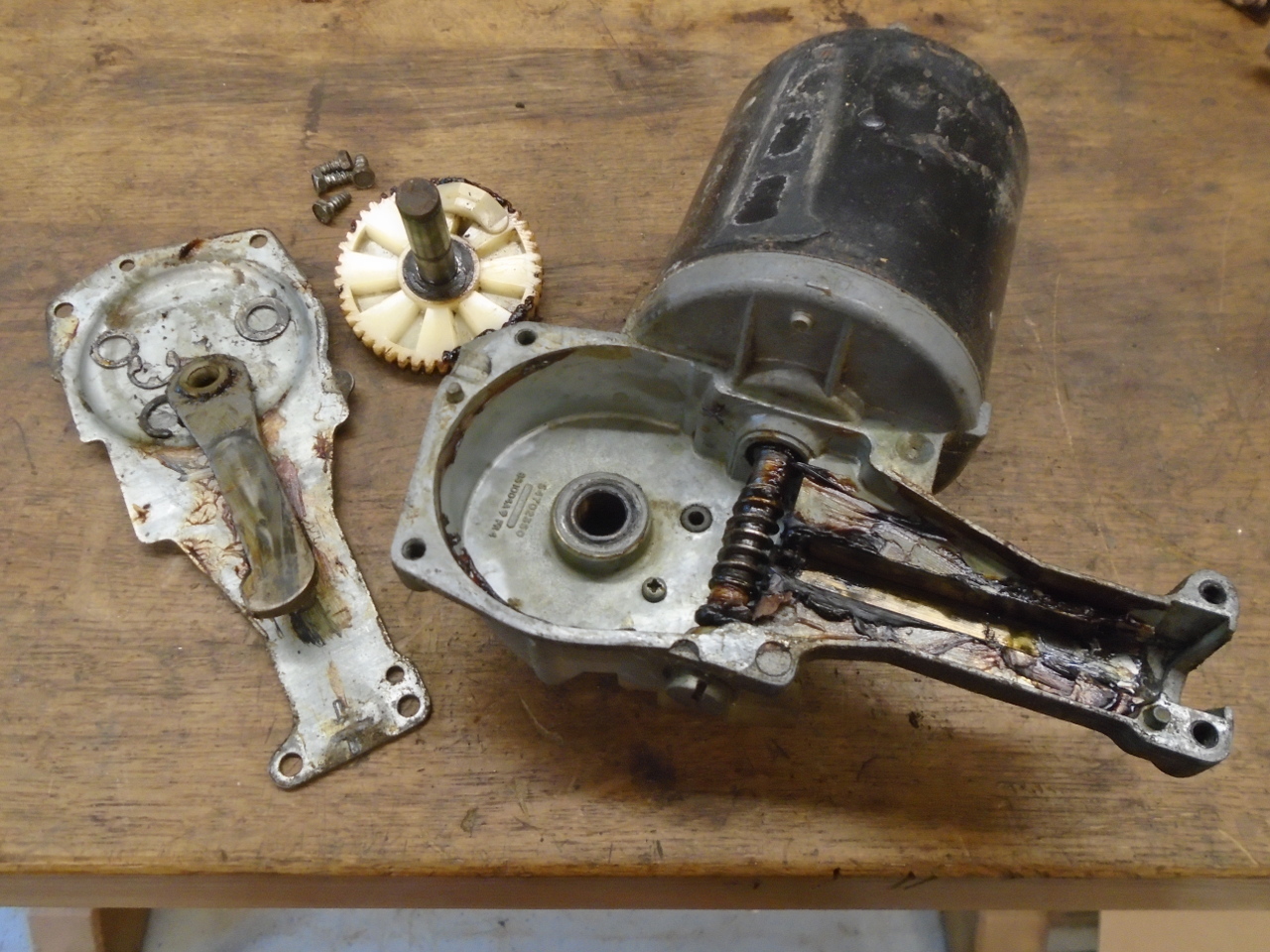
Pulling the motor body off revealed that it was a permanent
magnet motor. The Bakelite brush board was fitted with
three brushes. The extra brush is how the second speed was
accomplished. One of the brushes seemed a little short.
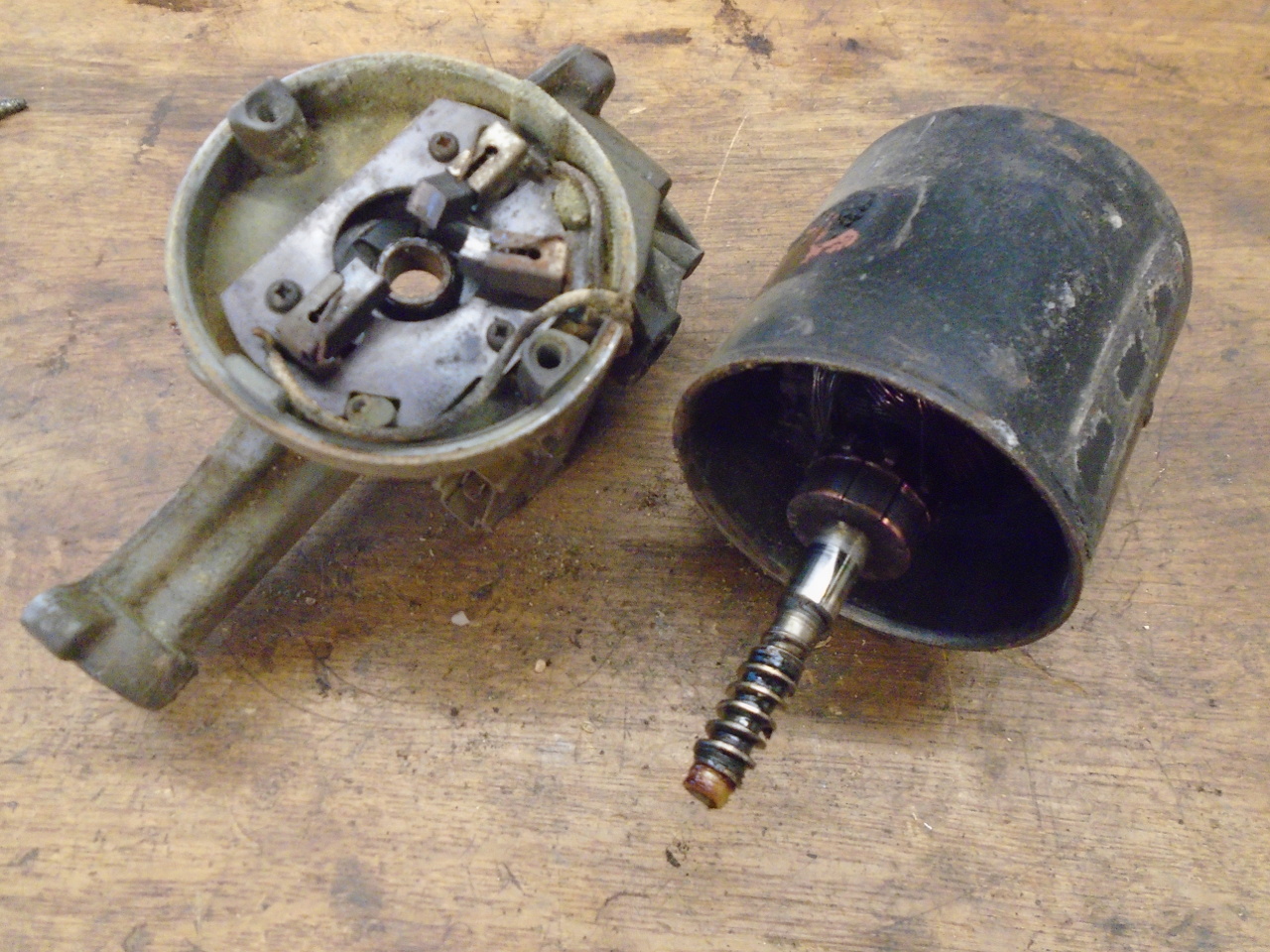
The brushes were hardwired to the park switch, which was mounted
to the back of the gearbox. The innards of the park switch
were mostly missing.
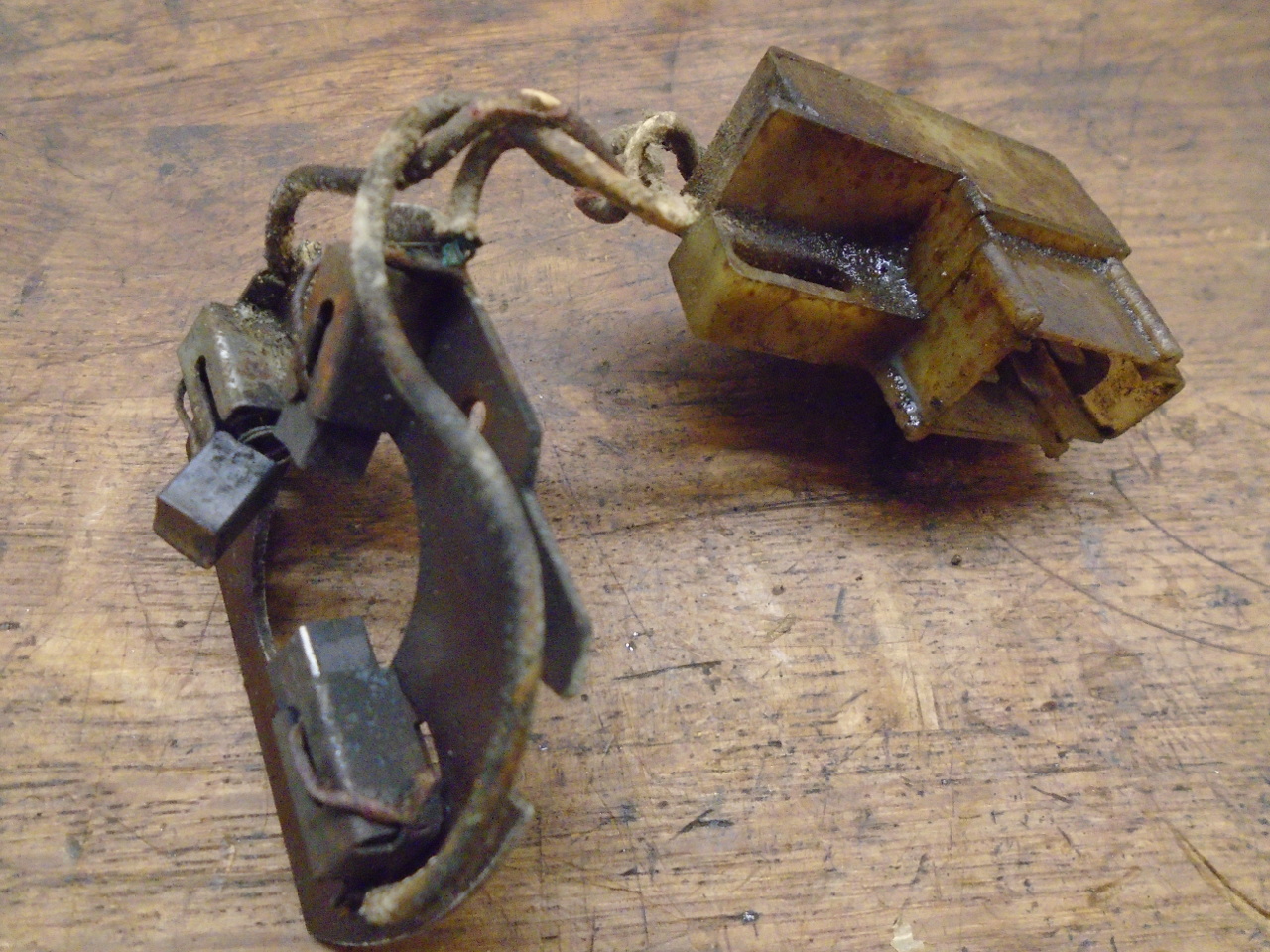
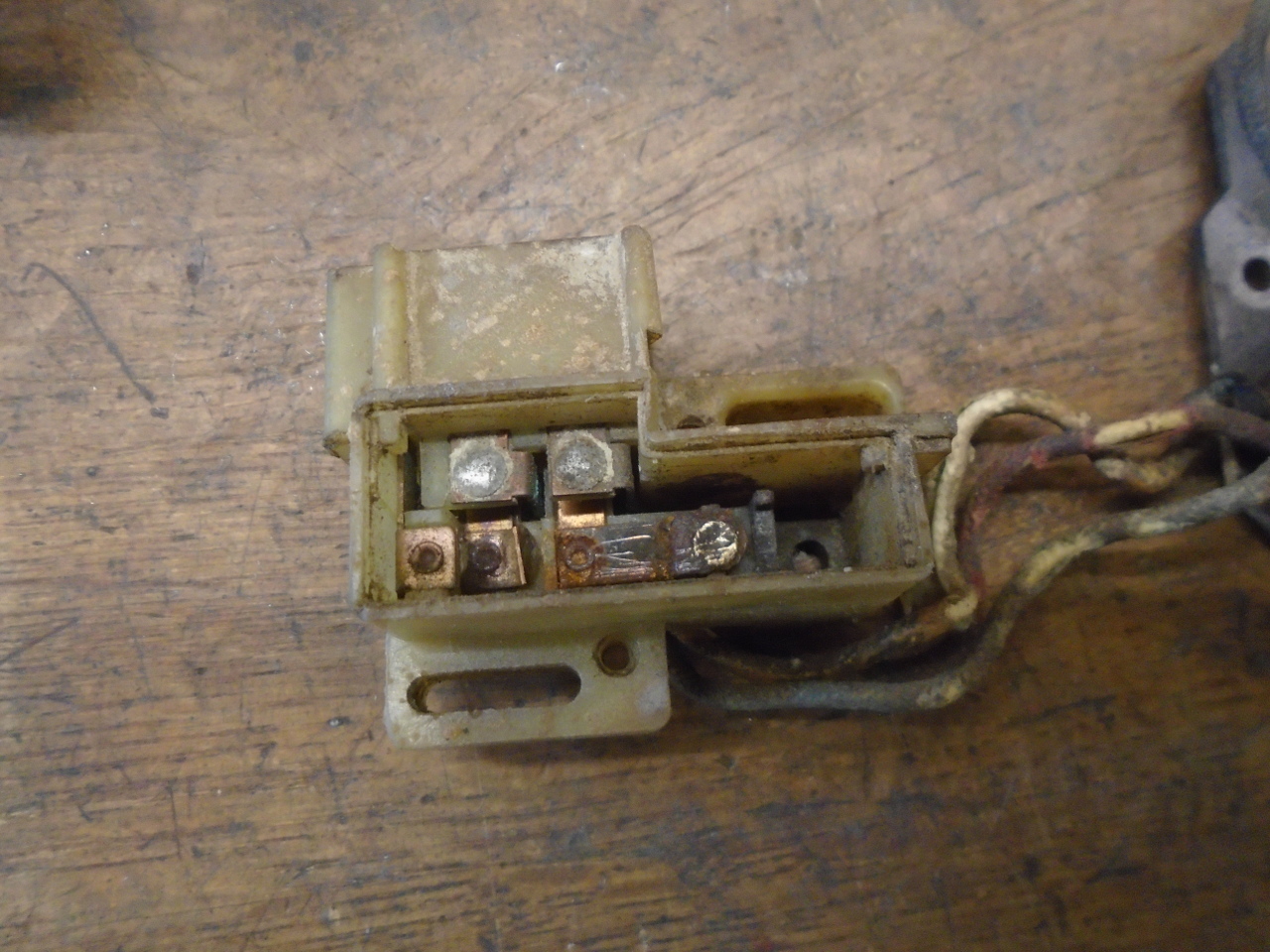
As for the armature itself, it looked pretty bad. Several
of the coils looked burnt.
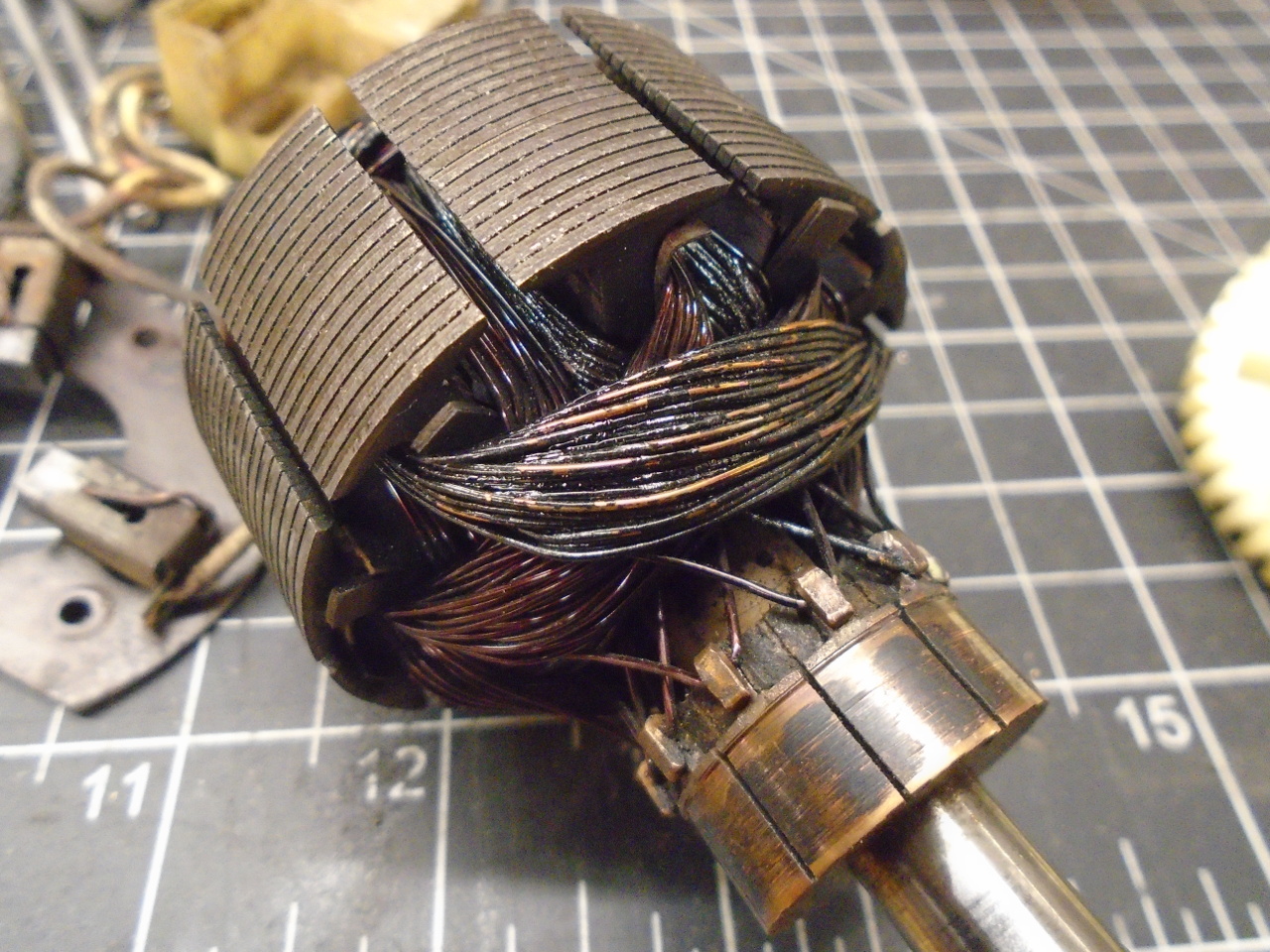
So, summing up the situation, I had an inoperative wiper motor
with worn brushes, a trashed park switch, and a knackered
armature. A perfect candidate for resurrection! I
was encouraged by the fact that a British company was offering
new armatures for a pretty reasonable price, so I ordered
one. I also ordered a new brush plate and a park switch
from a US supplier. I was ready to order new bronze
bushes, but honestly, the originals were still tight enough that
I didn't bother.
While waiting for the parts, I cleaned up the motor
housing. I wanted to powder coat it, so I pulled out the
magnets so they wouldn't be subjected to the oven heat. I
removed the paint, then the rust, and shot it with powder.
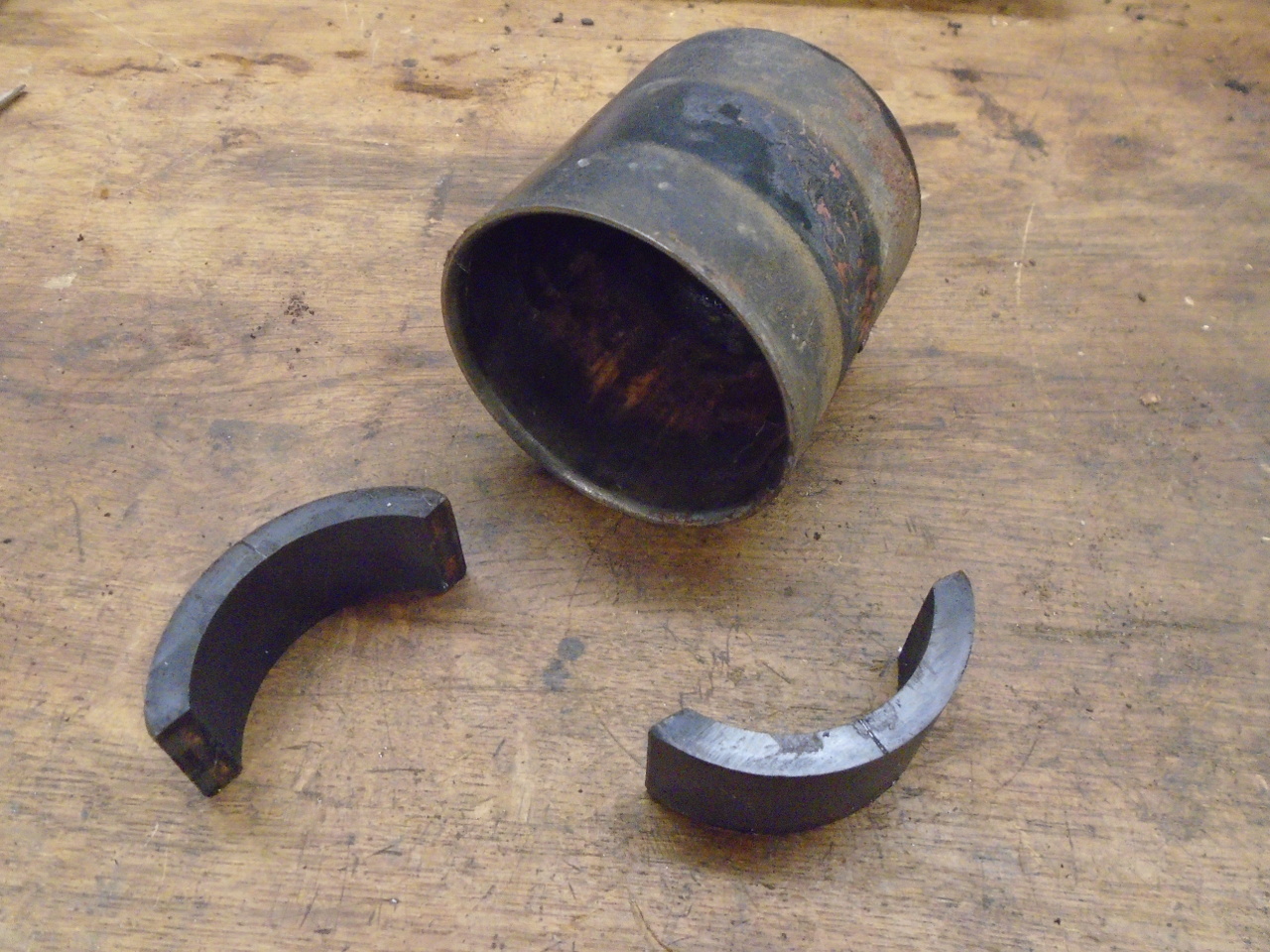
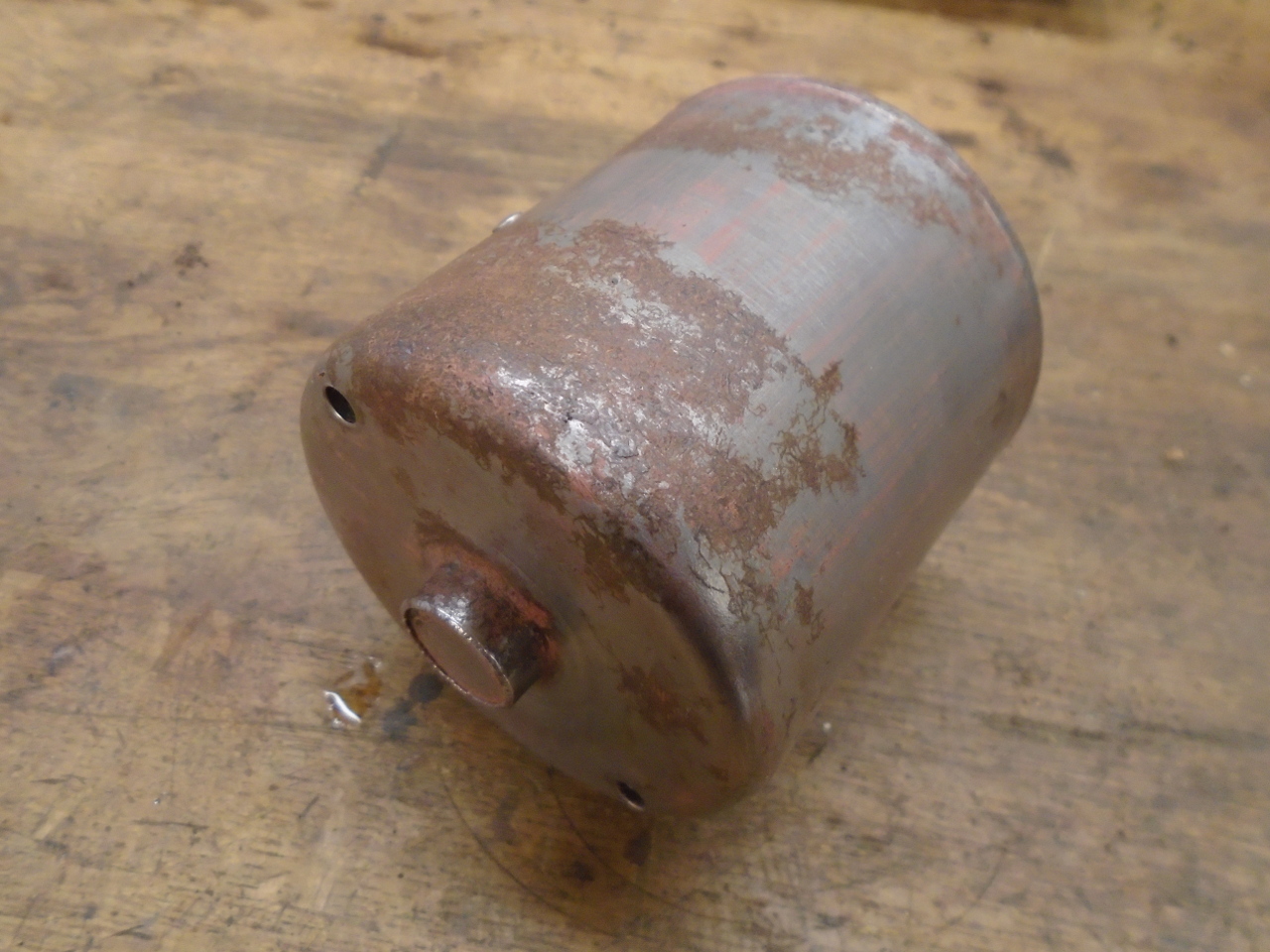
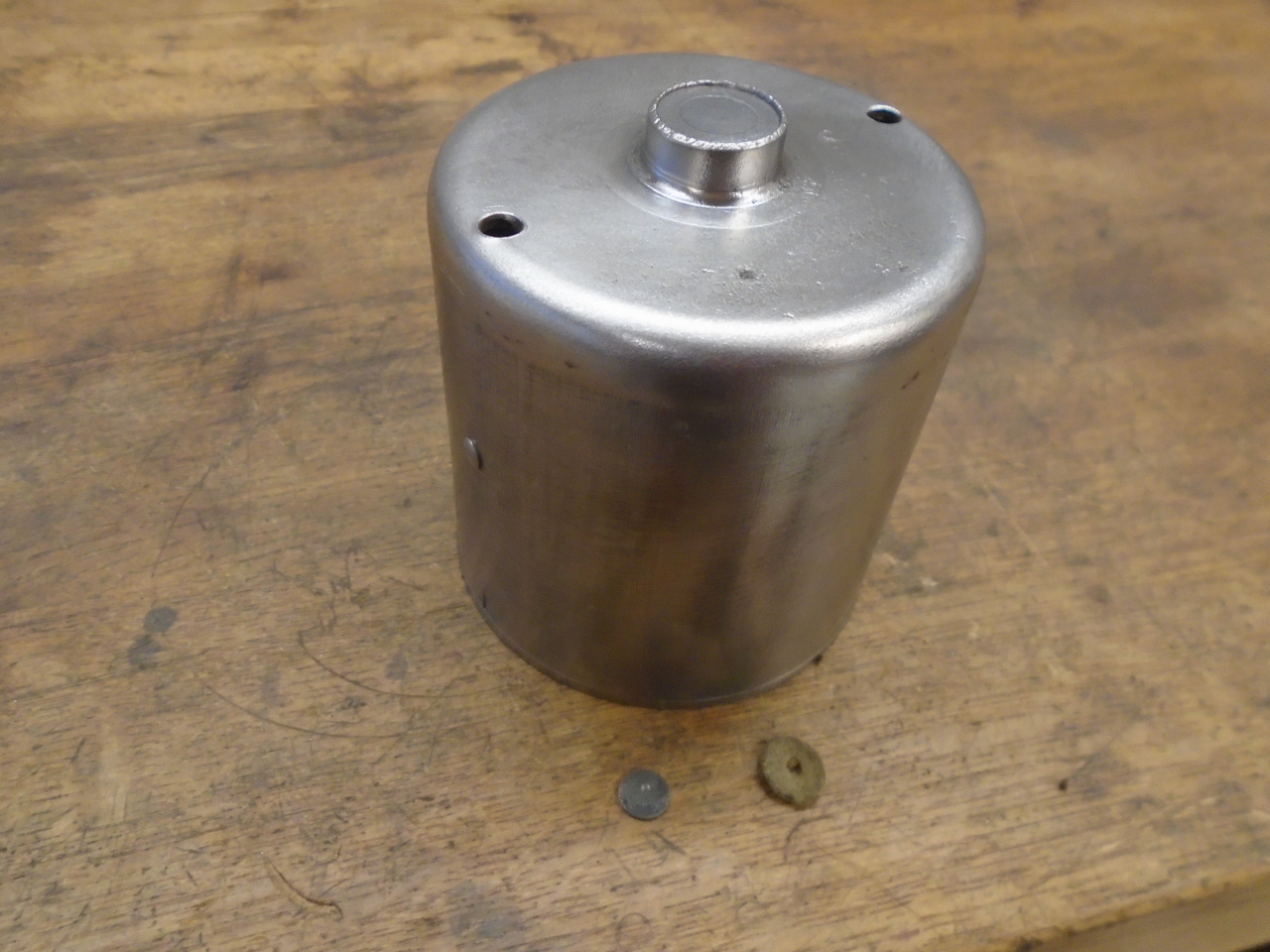
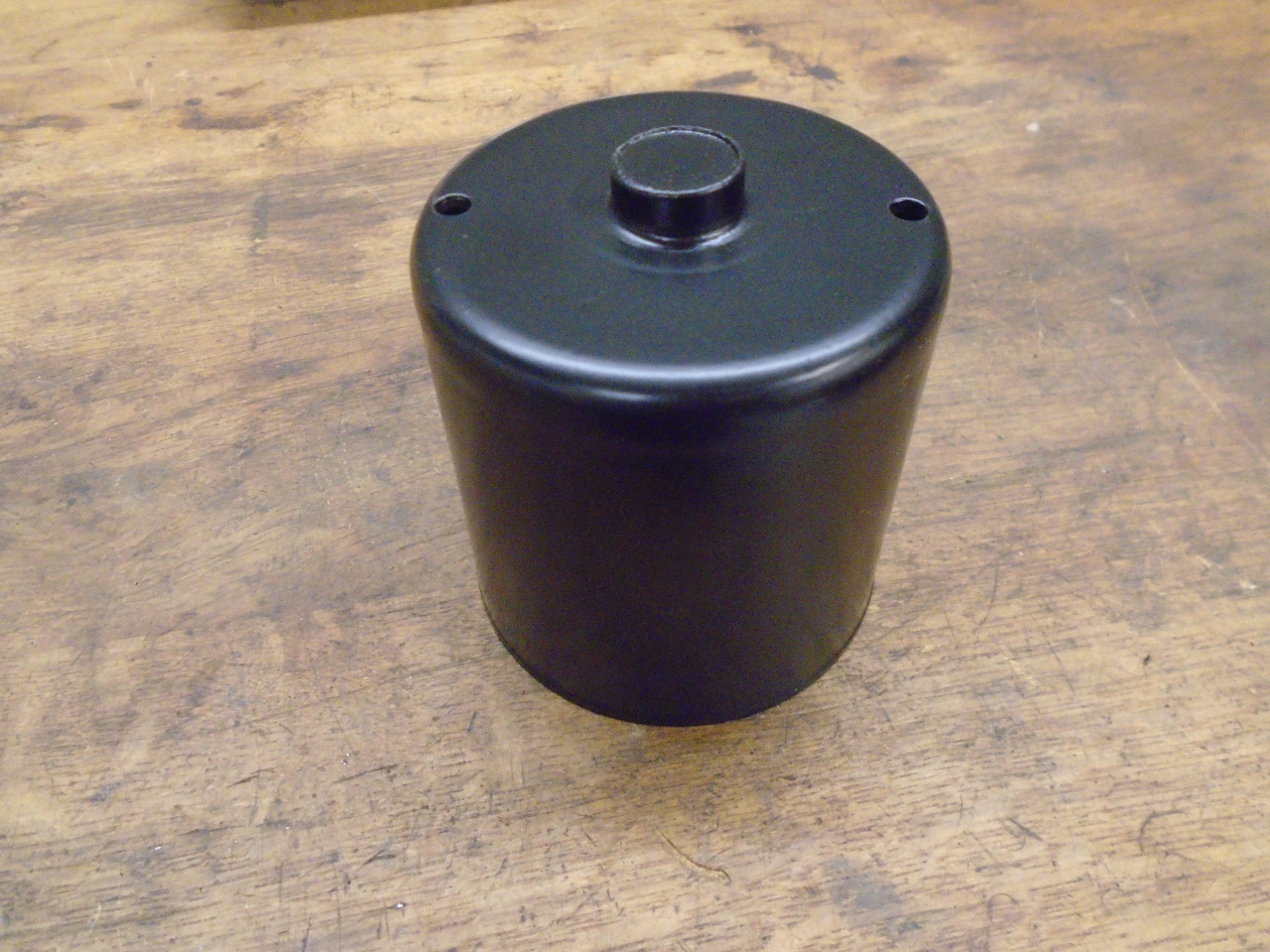
The park switch was the first part to come in. It worried
me a little that it looked quite a bit different from my
original. The original was attached with two screws, while
the new one just had a little metal clip for fastening.
Before calling the vendor, I did some research and found that
what I had was an "old style" wiper motor, as evidenced by the
"A" suffix to the part number stamped on the cover. I also
found that park switch for the old style motors are apparently
no longer available.
It looked like the mounting was the only difference in the
switches, so I looked at modifying the pot metal gearbox housing
to accept the newer switch. The first pic is the early
housing from the GT6, the other is the later housing from my
TR6. I had to make the GT6 part look like the TR6 one.
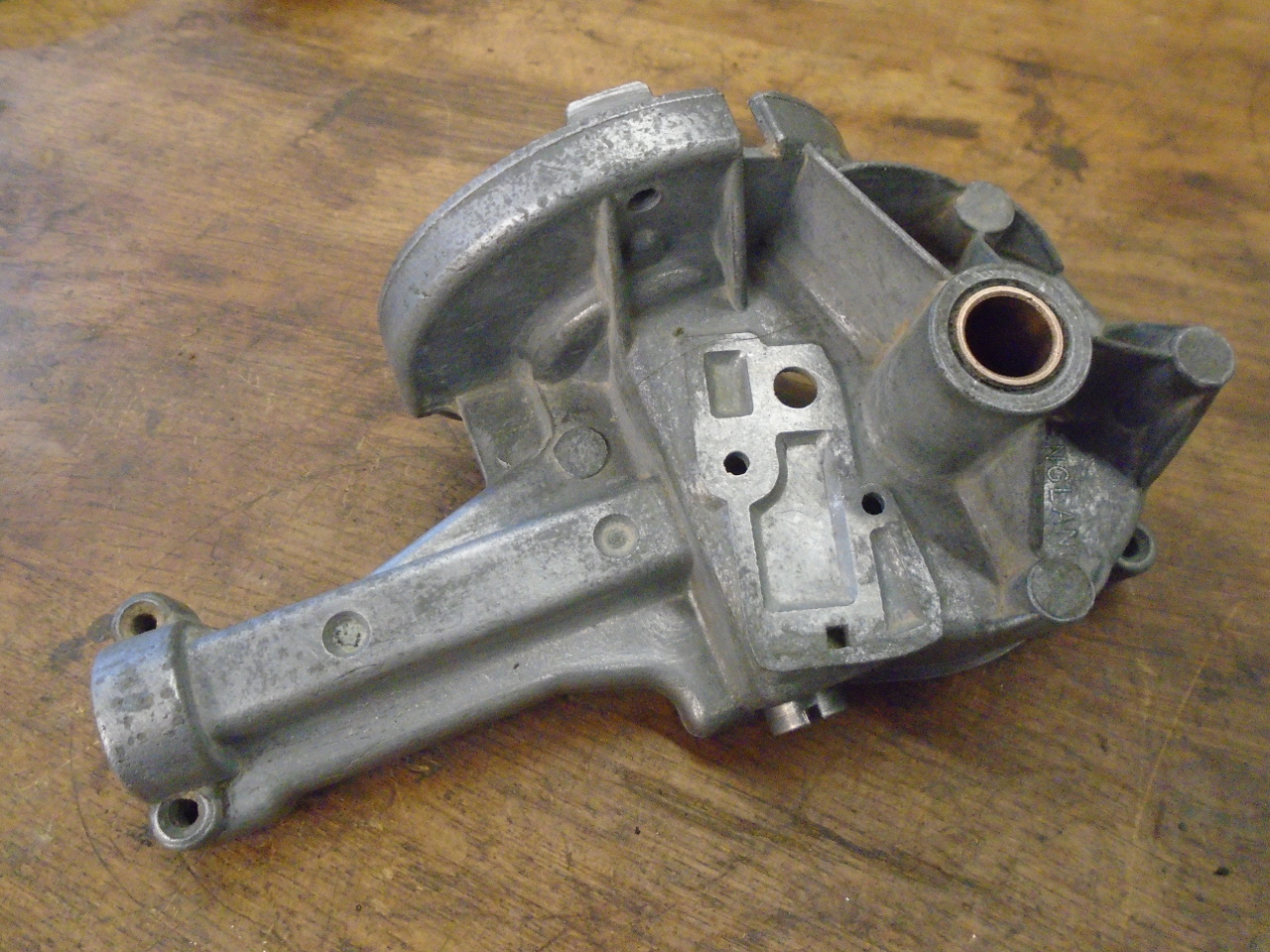
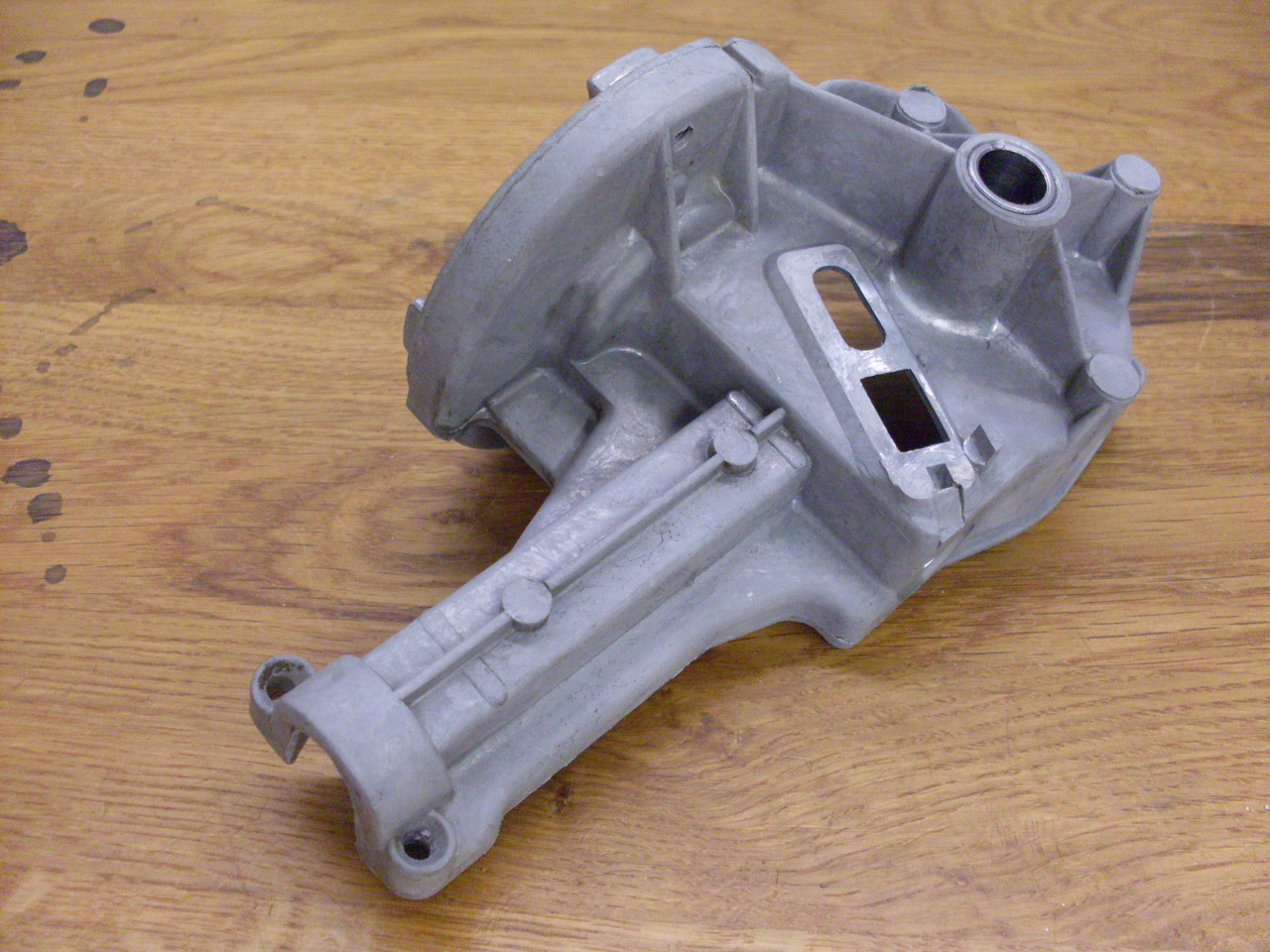
I cut a slot in the housing, and made a little steel bridge for
the switch's clip to grab. The last pic also shows my
really rough hammertone powdercoat. I'm not sure what
happened there. The bad areas are mostly out of sight, but
if it bothers me enough, I'll strip it and re-coat.
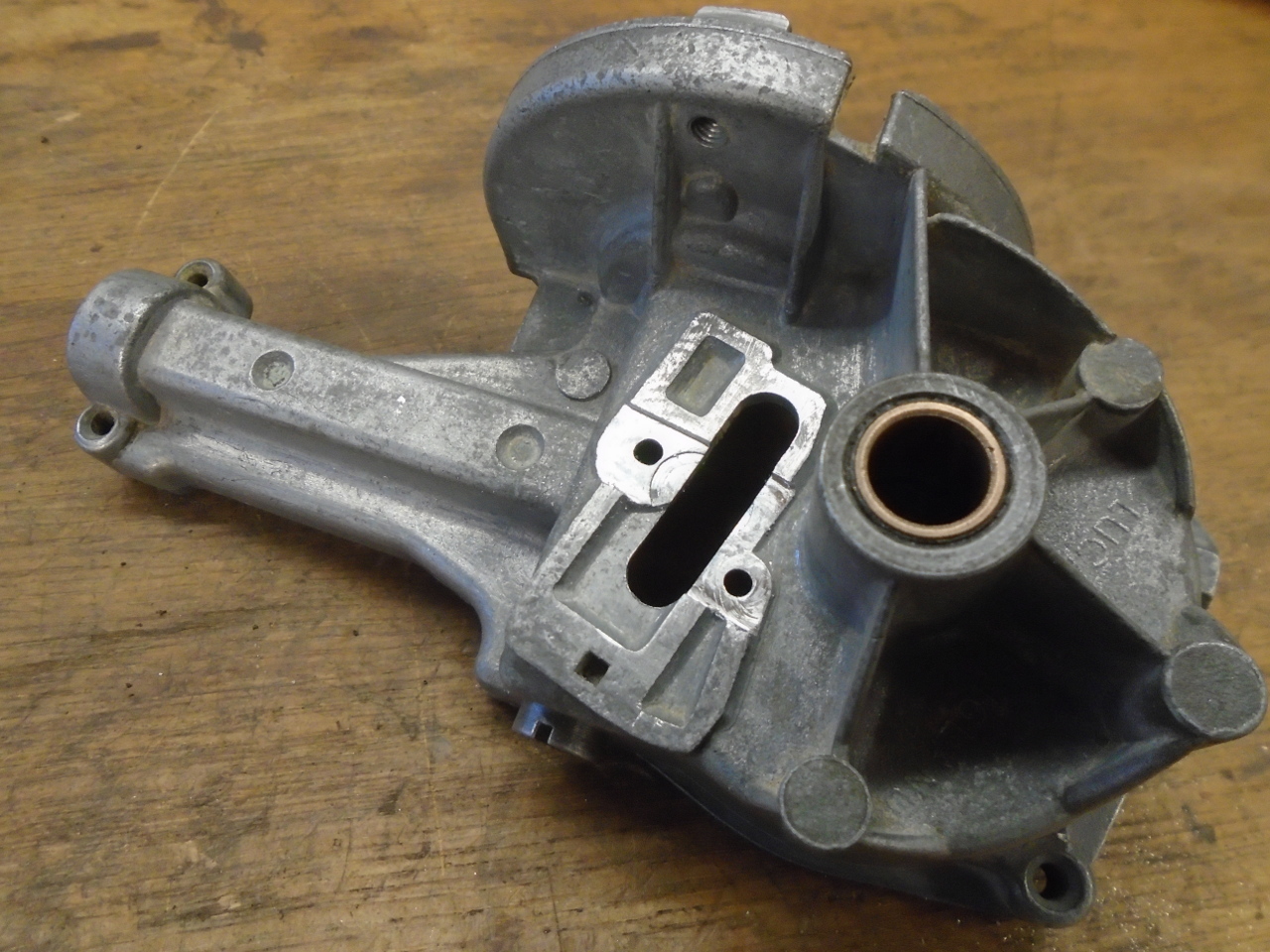
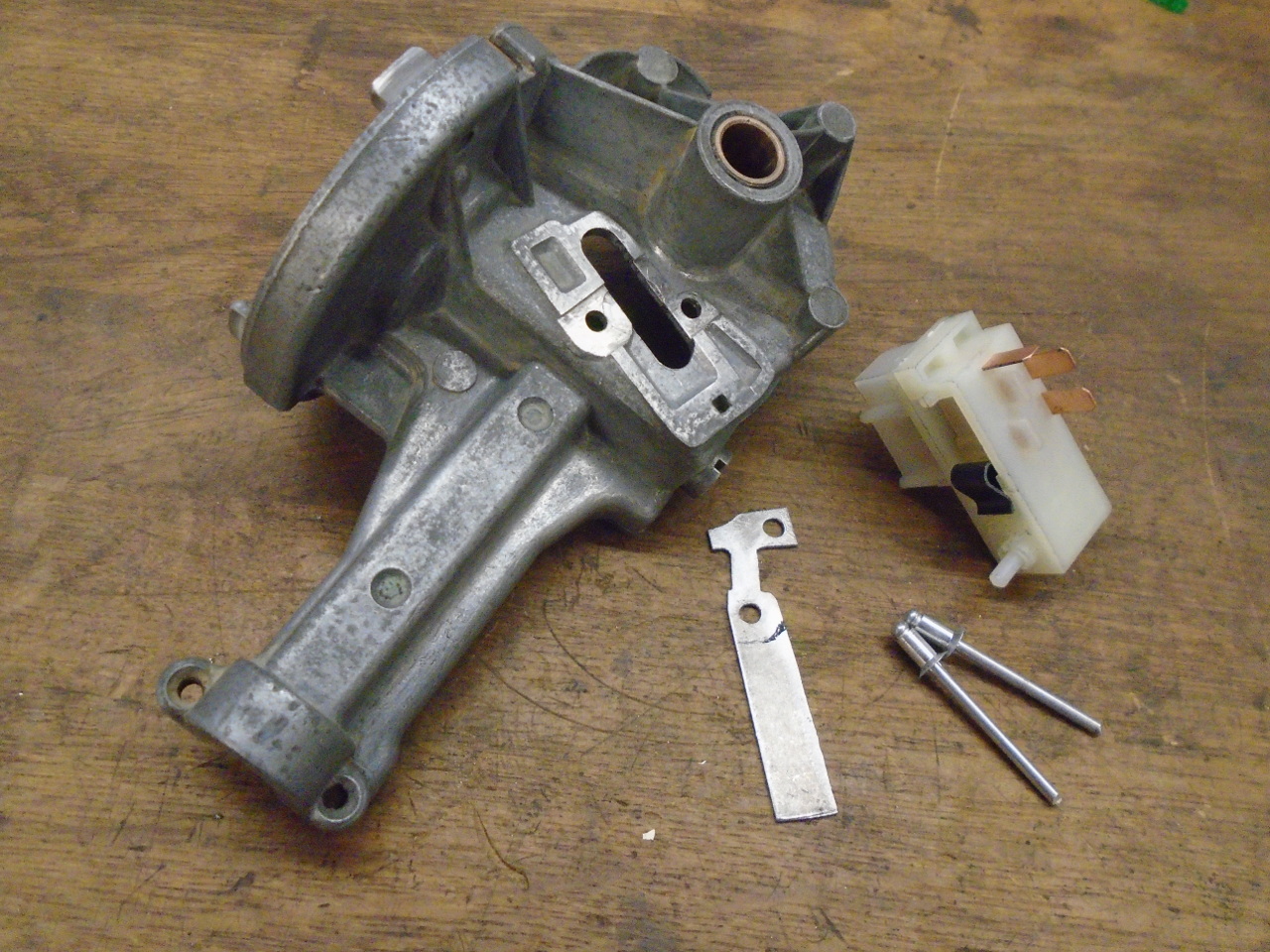
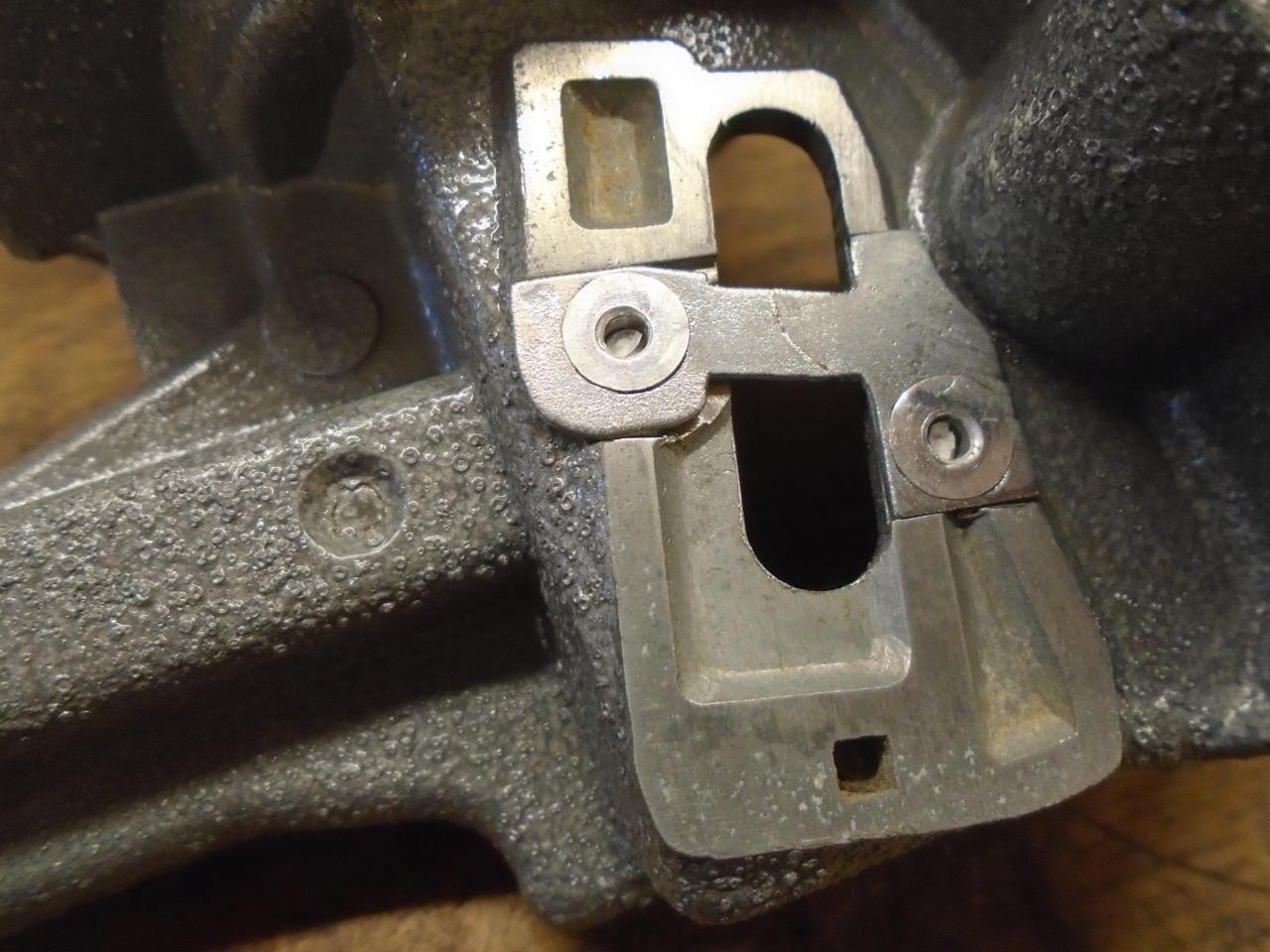
This shows the switch mounted.
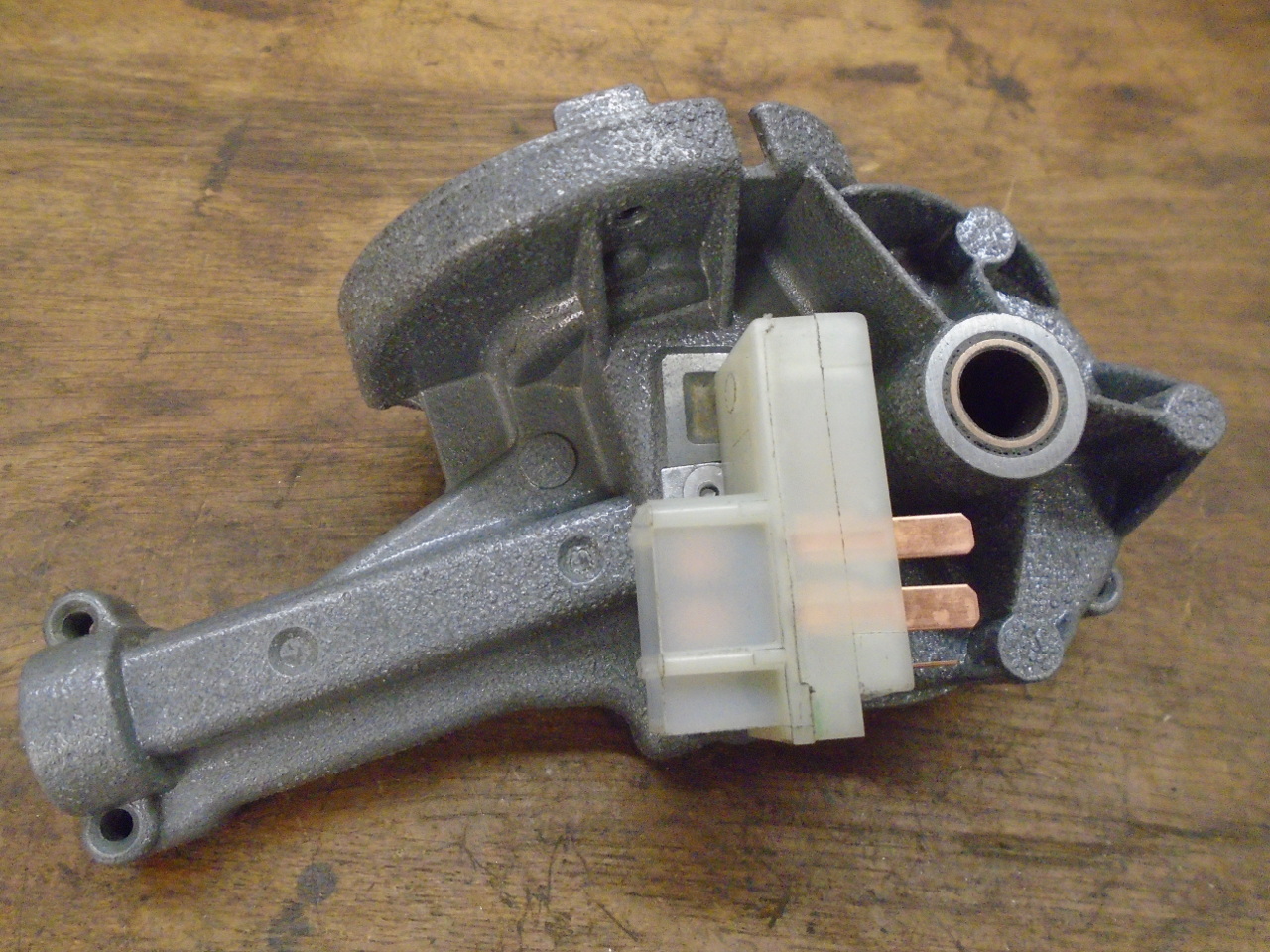
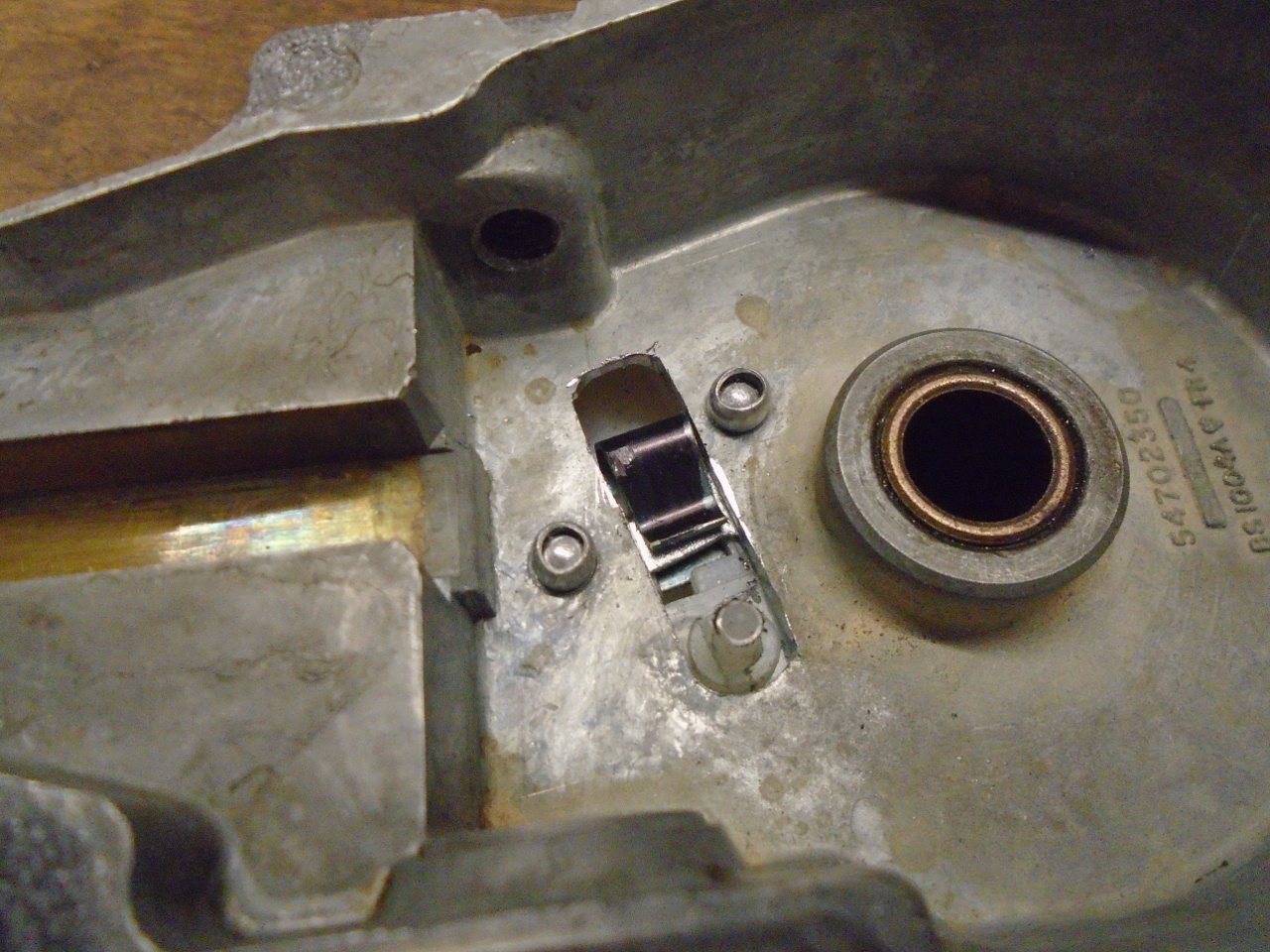
About this time, the brush plate came in. I guess I
shouldn't have been surprised, but it was also different from my
old one.
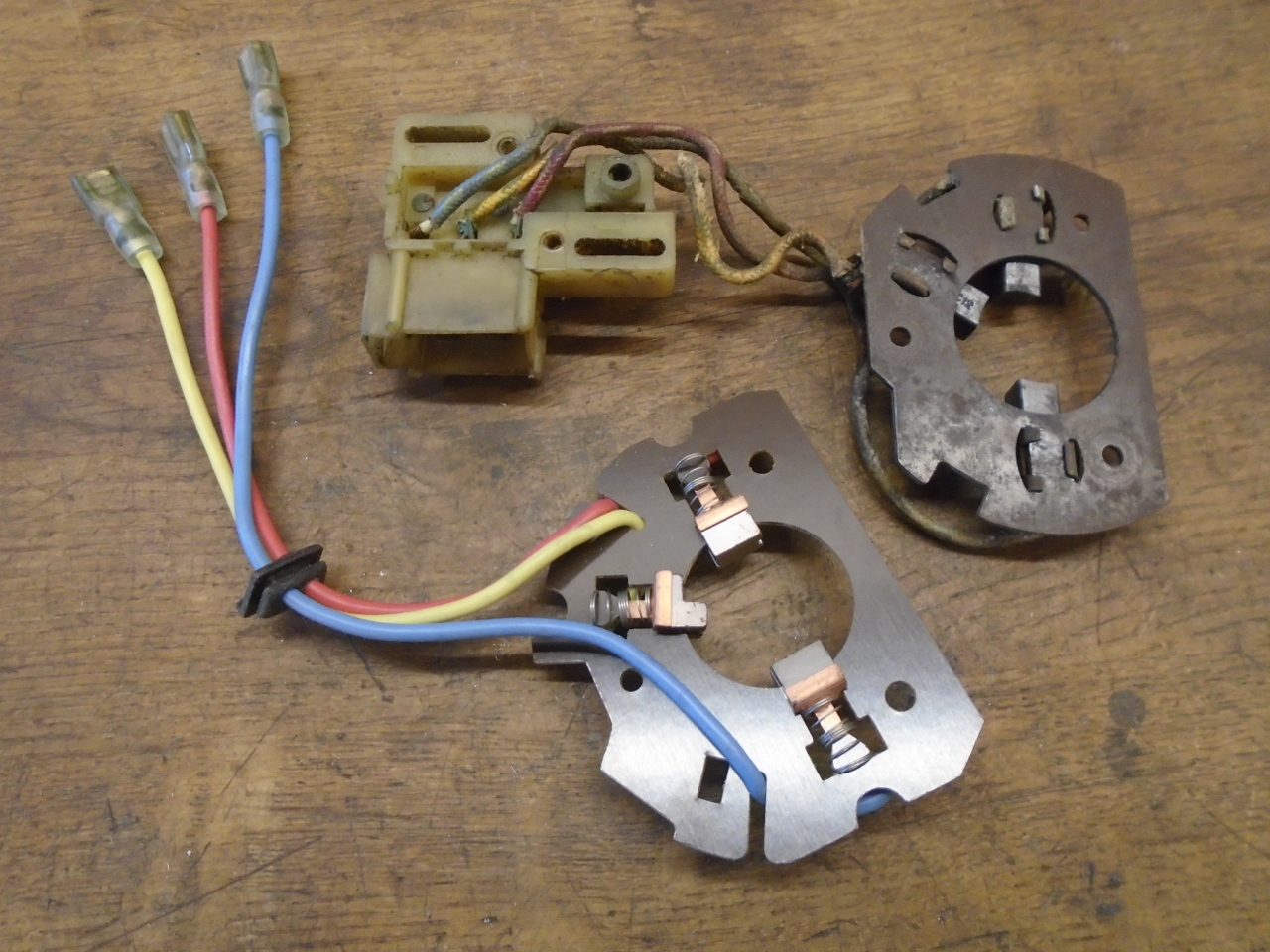
I had to reshape the Bakelite plate to clear some features of
the housing, and, since the brushes were mounted differently, I
had to space the plate up about an eighth of an inch so it would
be centered on the commutator..
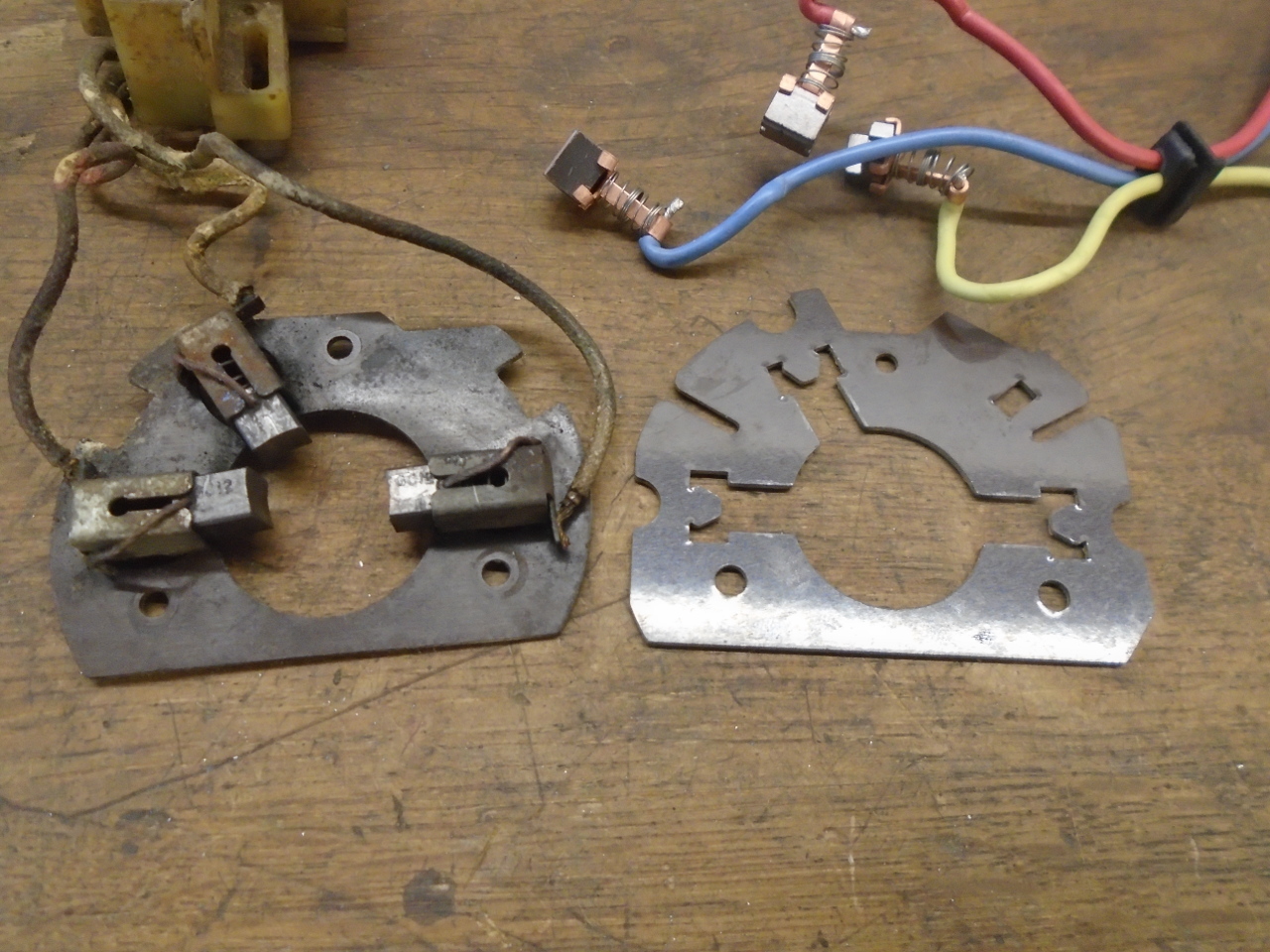
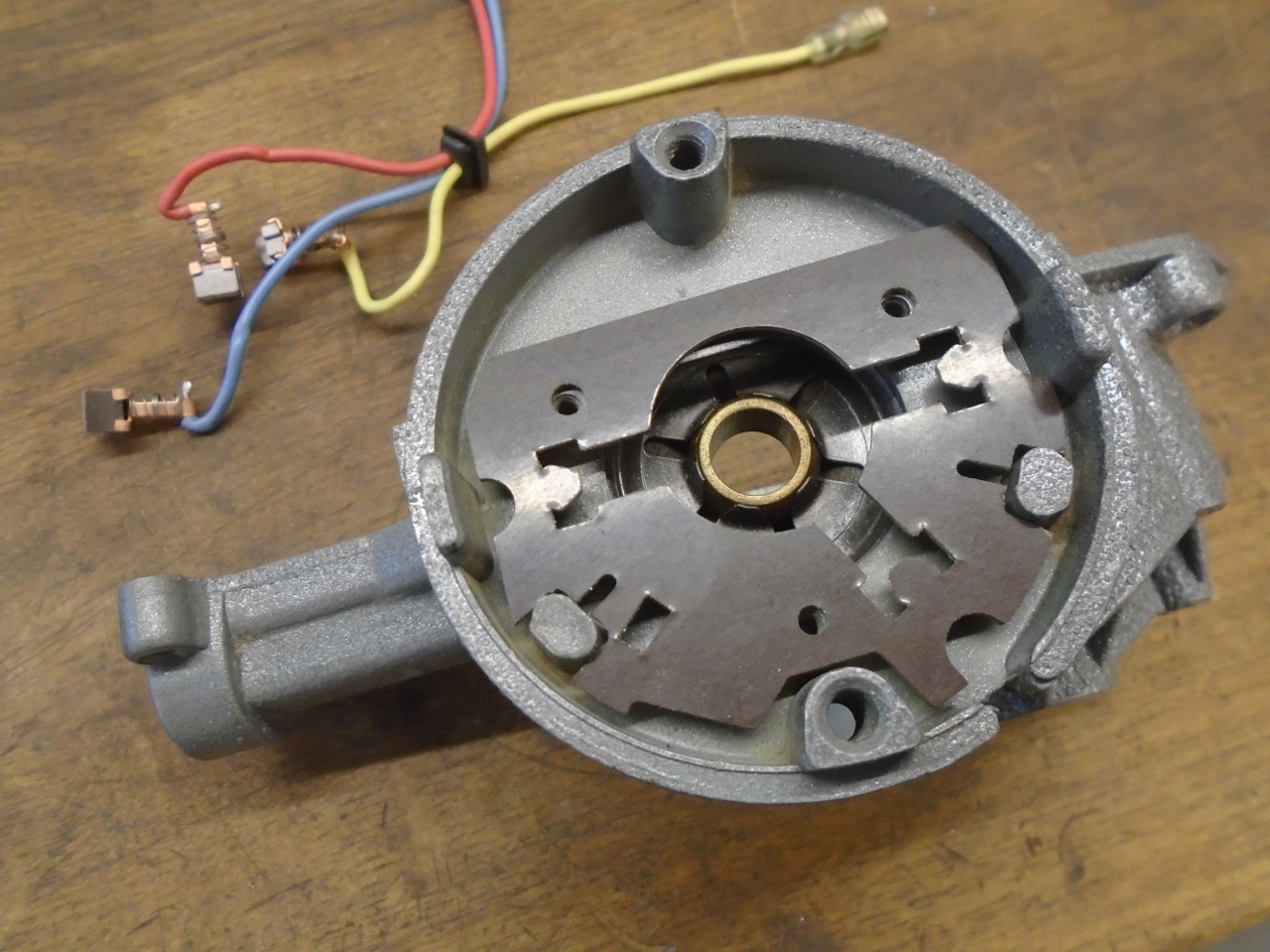
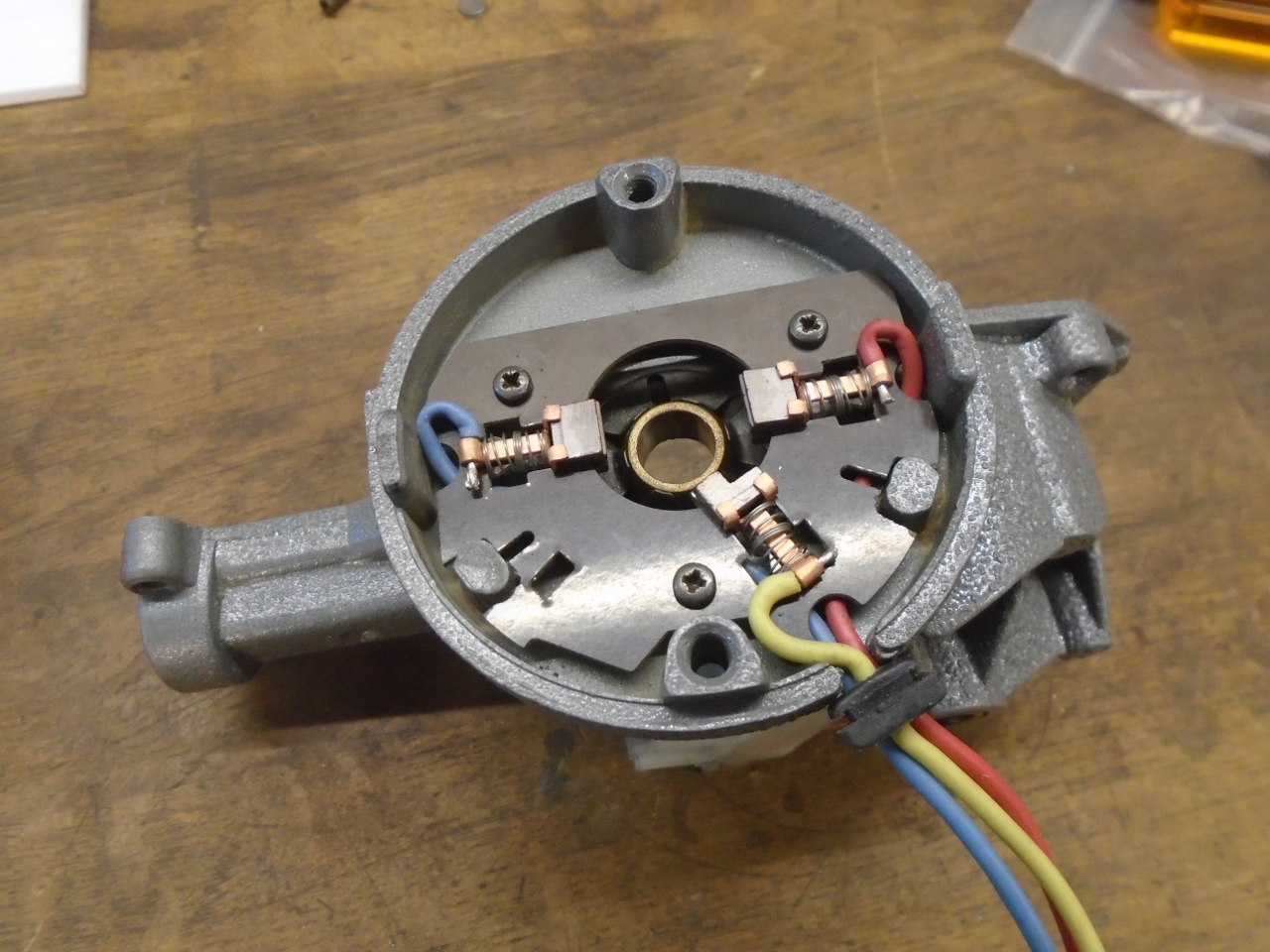
Well, at this point, I had a fair amount of work in this wiper
motor, which made it even more irritating when I got a message
from the British armature supplier saying that they didn't
really have the armatures after all.
There were a couple of options: forfeit all the work to date and
take my chances buying a used or a reproduction assembly, or try
to rebuild the armature.
I had no intention of even considering rewinding the armature at
the beginning of this project, and even though I had zero
experience with the process, I knew it was possible, and the
challenge sort of appealed to me.
With nothing to lose, I started by unwinding the armature,
carefully recording how everything was wound and connected.
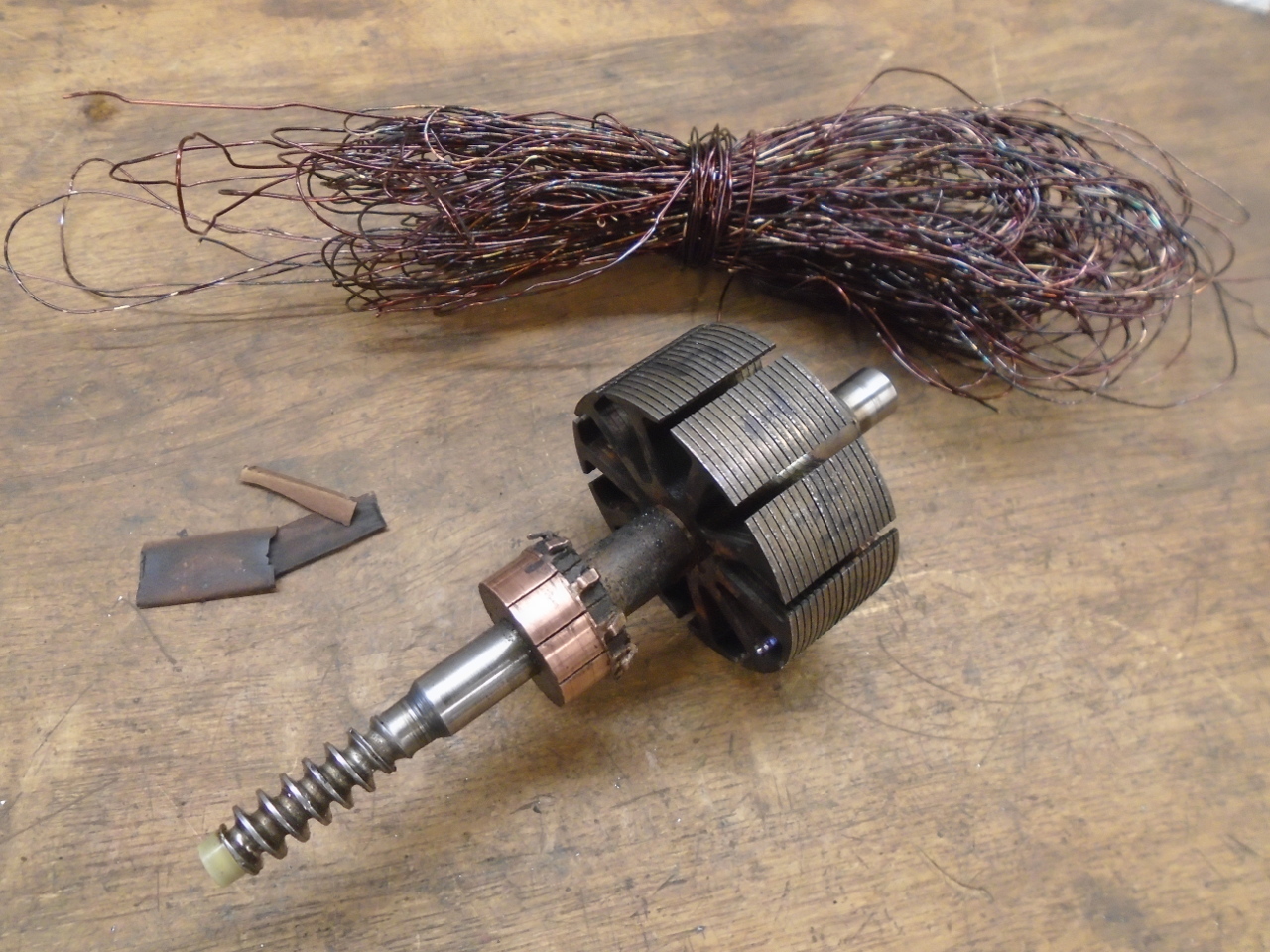
Then did some research on armature winding, and while the actual
winding didn't appear too hard, there ware quite a few different
coil arrangements to choose from. Based on my unwinding
records, I chose a technique called "chorded split loop
winding". It is not the simplest way to do it, but it has
the advantage of being symmetrical so it produces an armature
with better mechanical balance than simpler methods. Also,
it was the way it was originally wound.
So, I got some 22 gauge lacquered wire and some "fish paper"
used to insulate the coils.
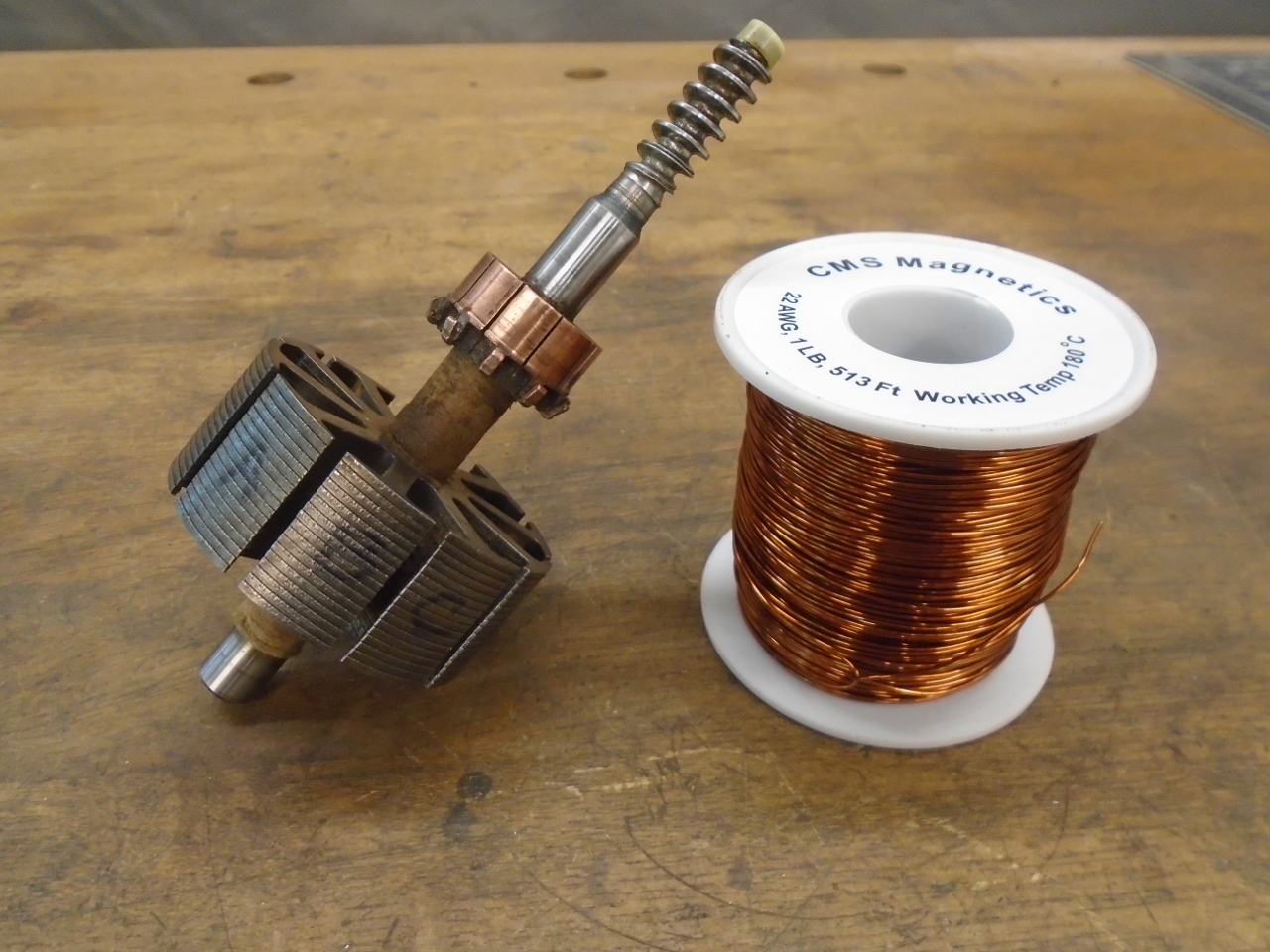
Ten coils of 35 turns each, and I had a new looking armature.
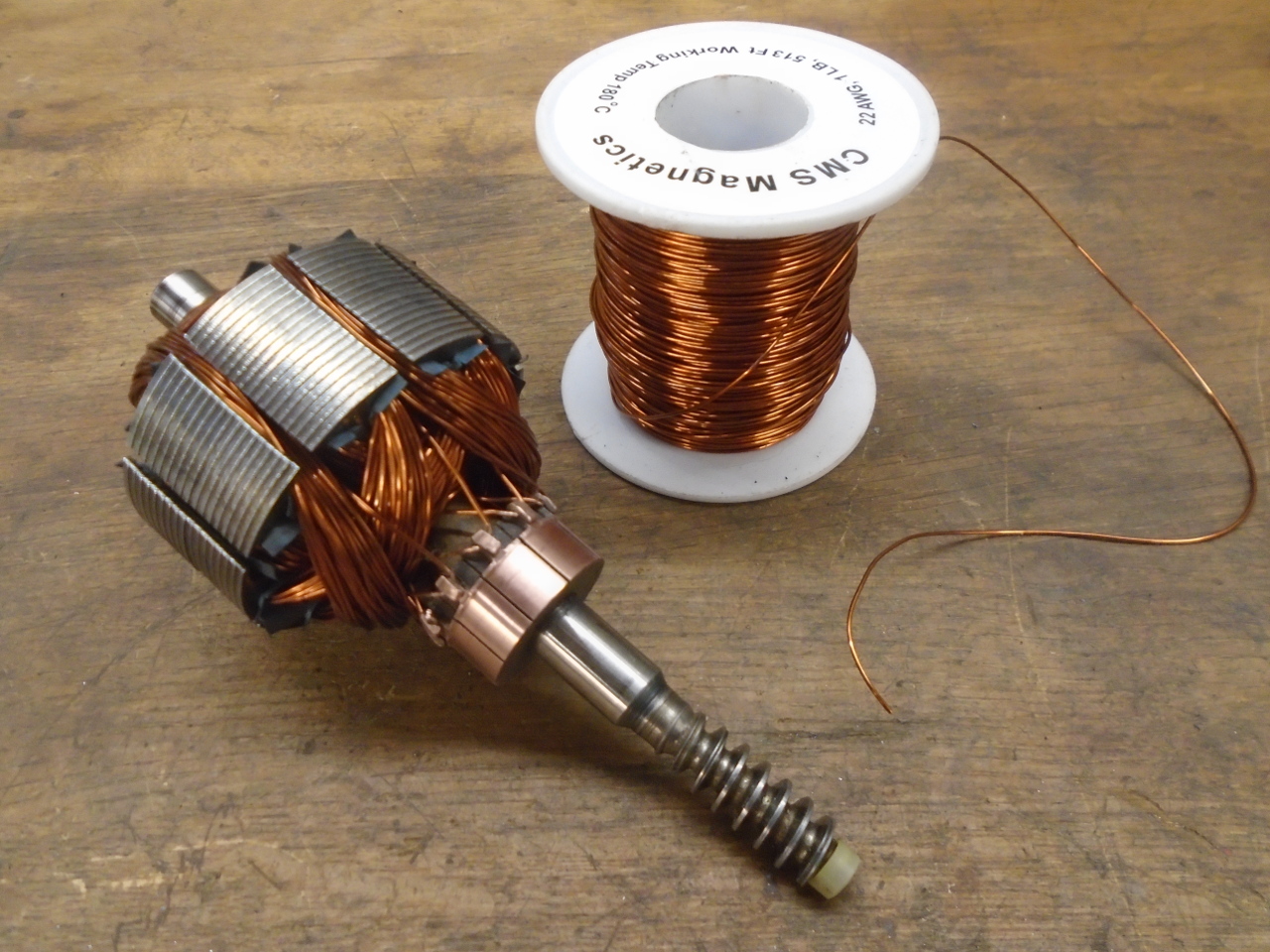
Popped the motor back together and tried it out. After a
little fiddling, it seemed to run fine.
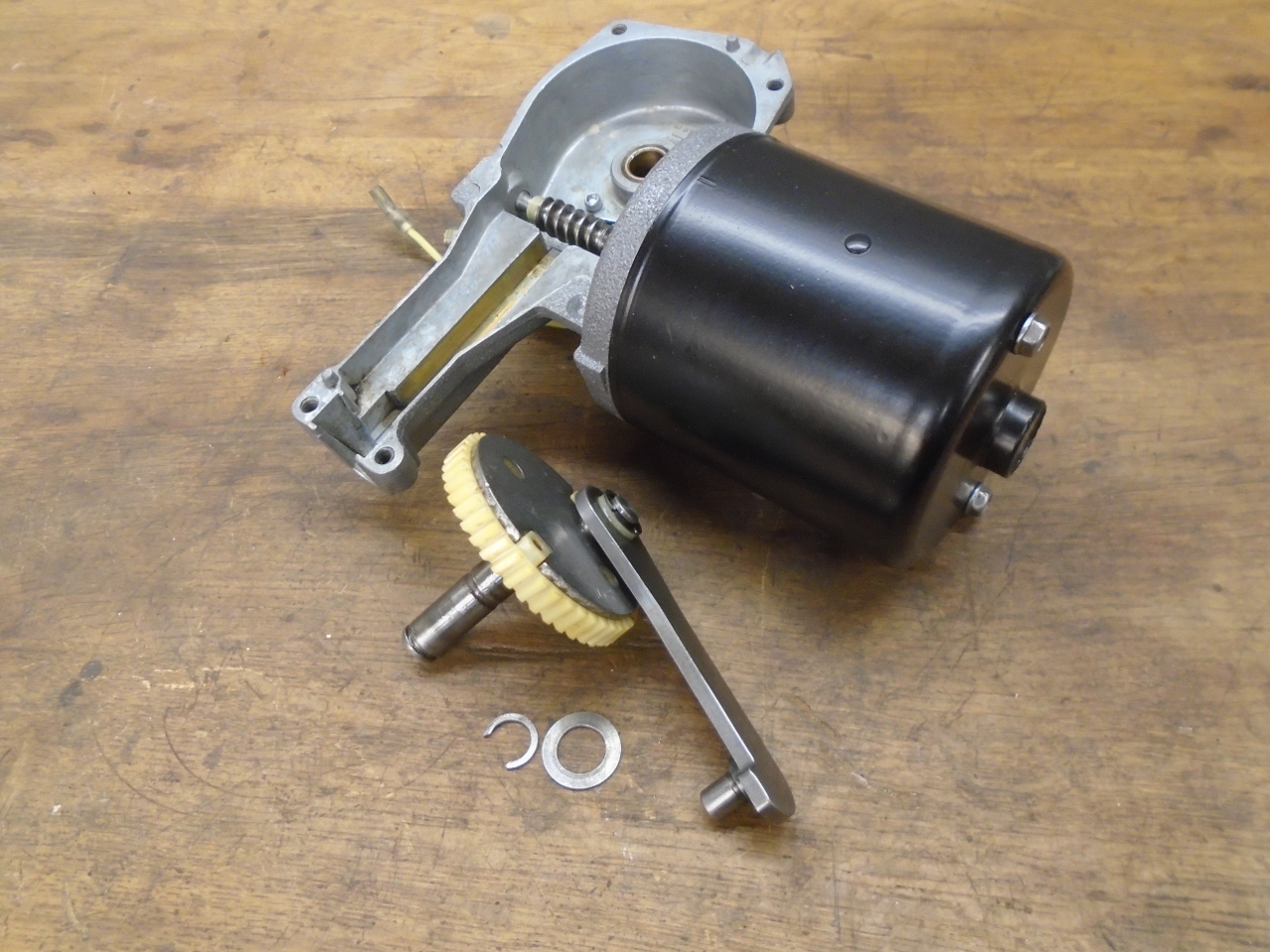
Hooked up the park switch and installed the worm gear.
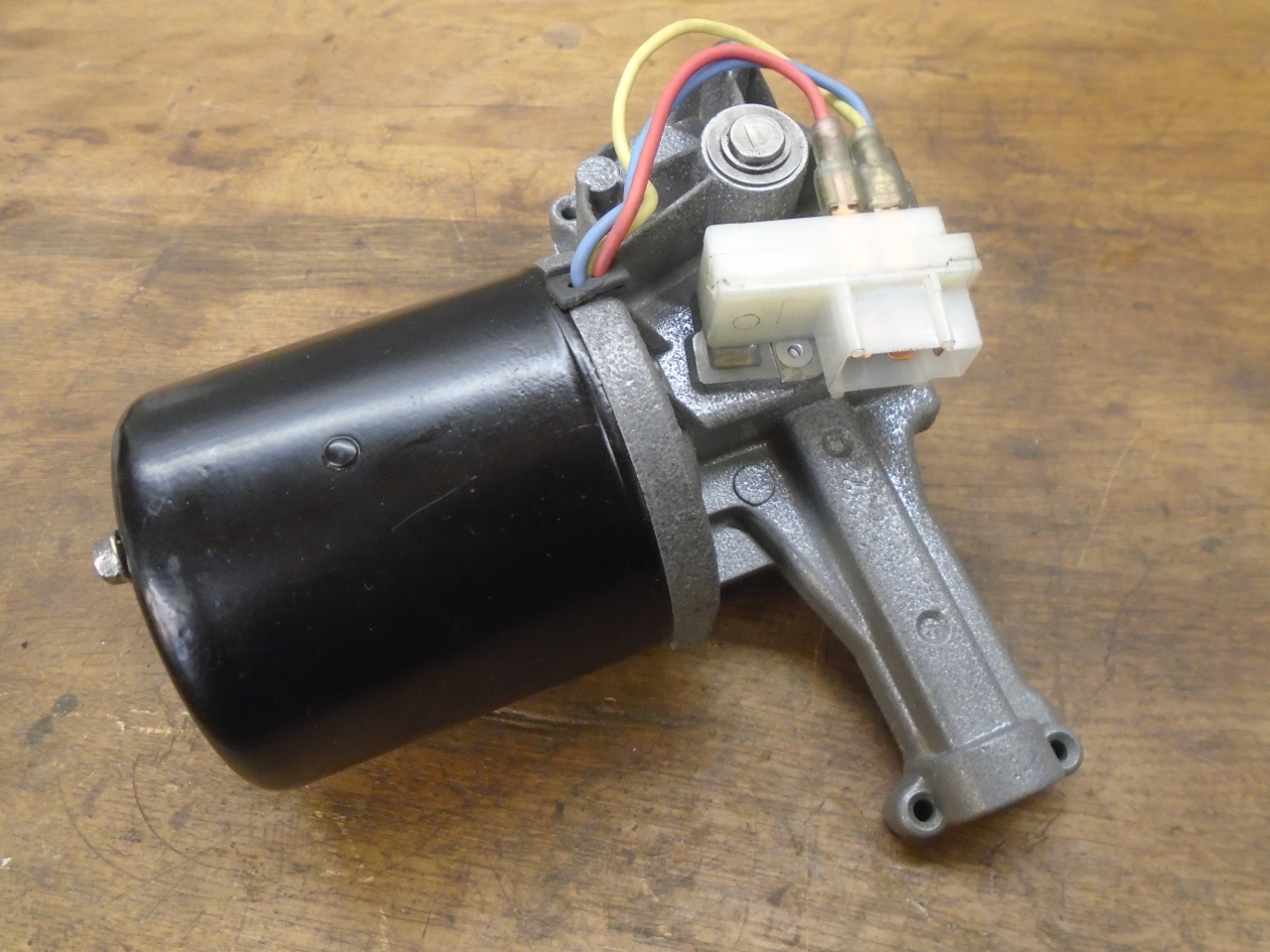
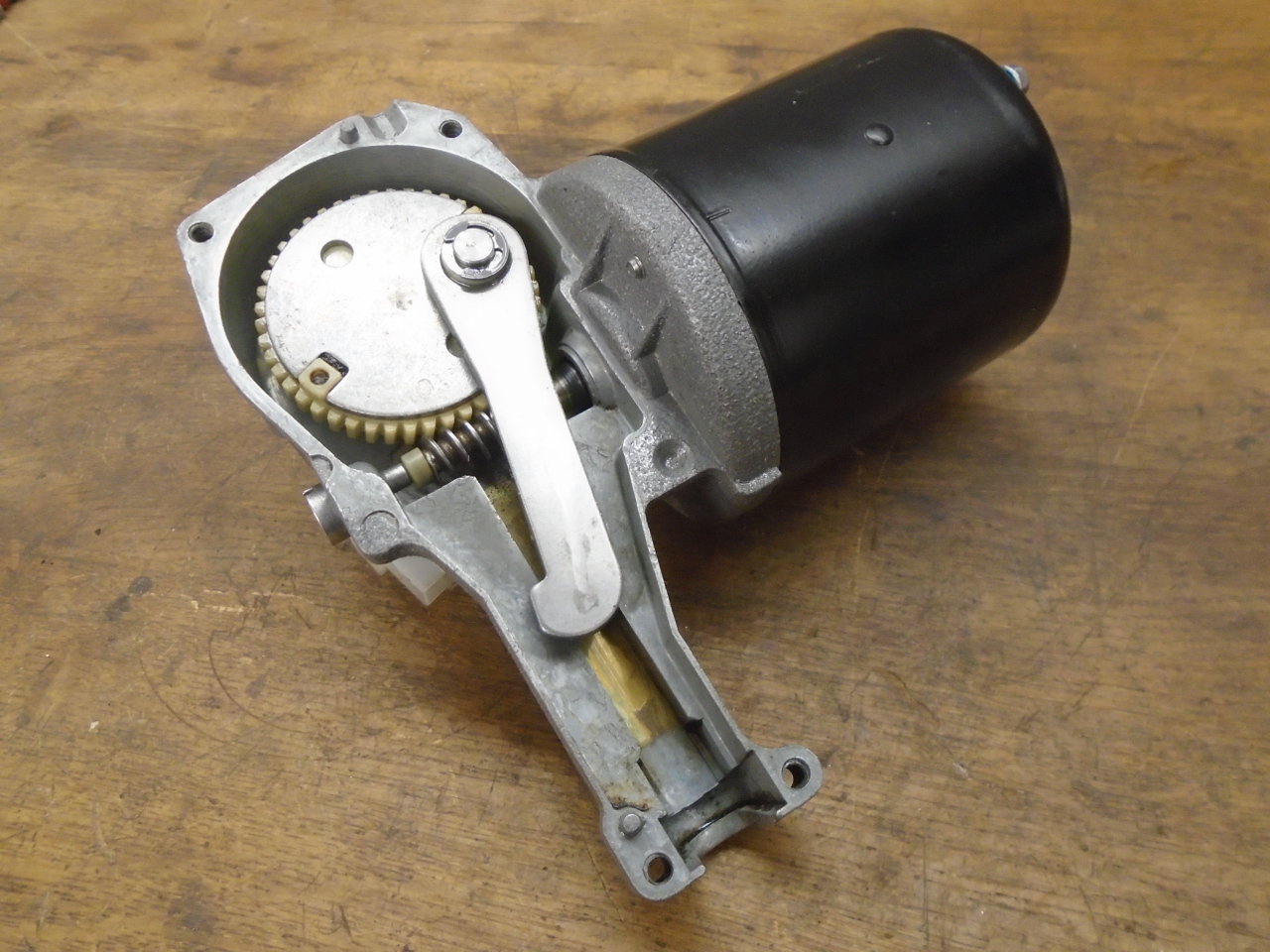
And buttoned her up for storage. I'll put off packing the
gearbox with grease until installation time.
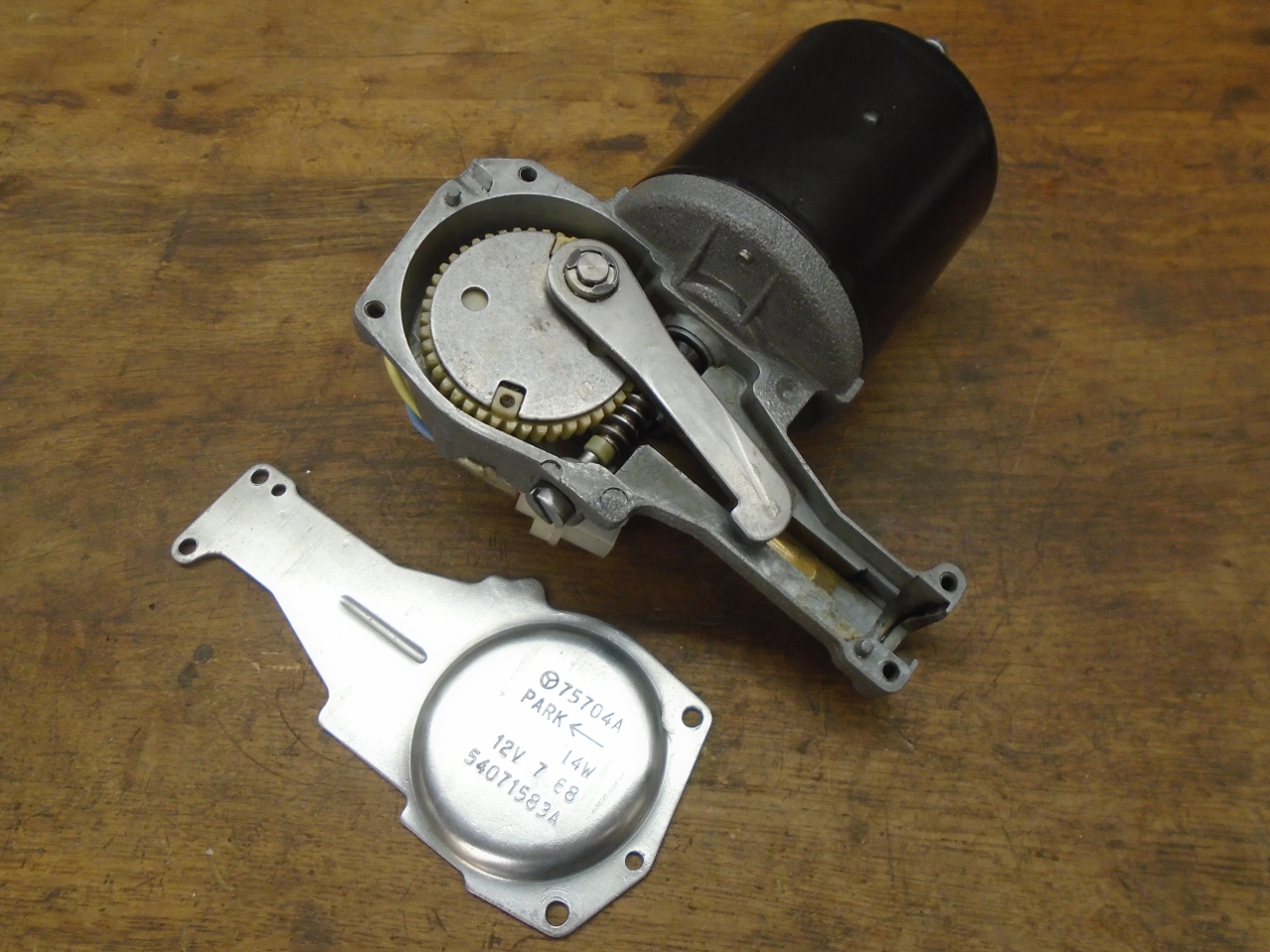
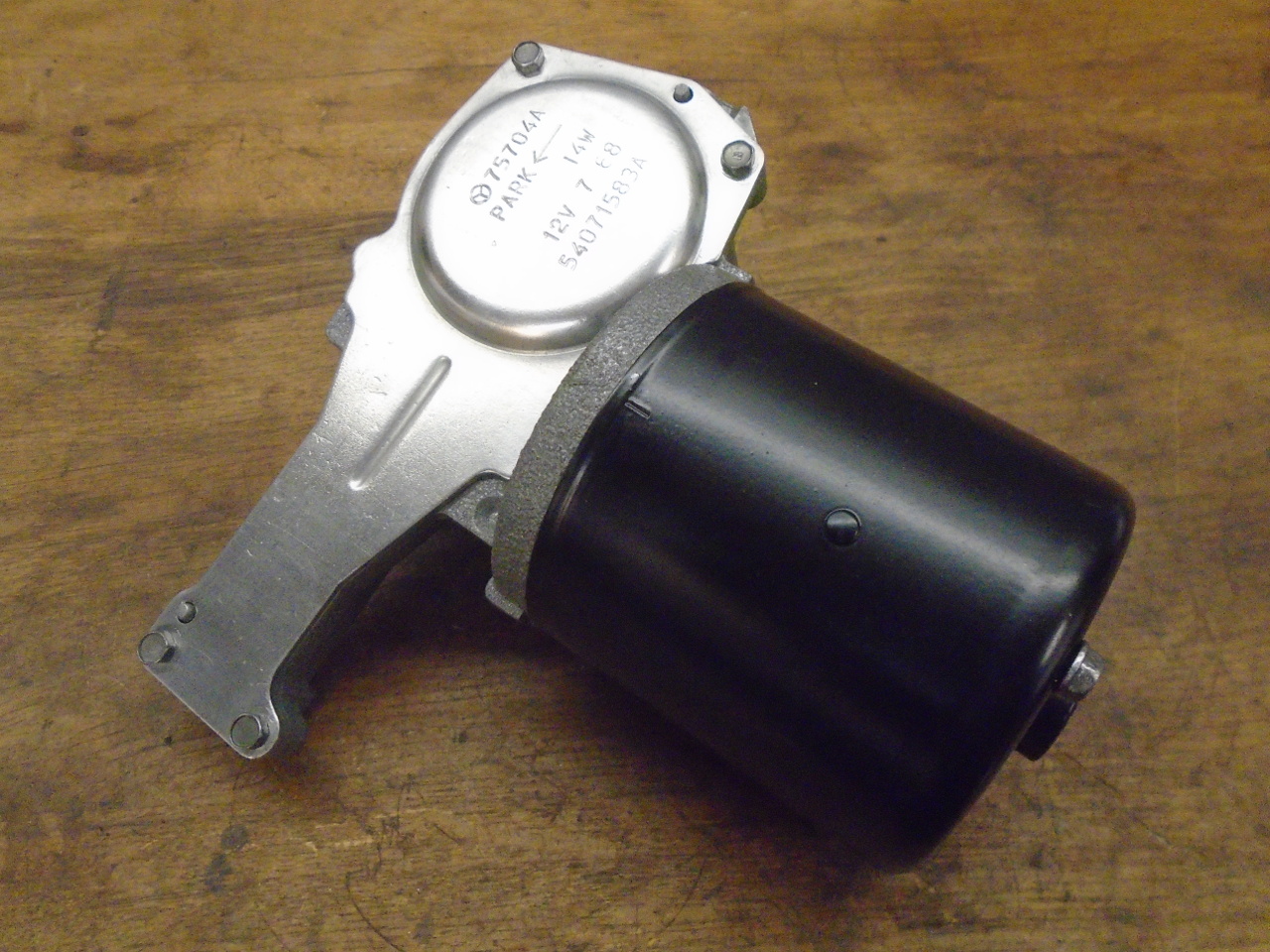
New rubber for mounting.
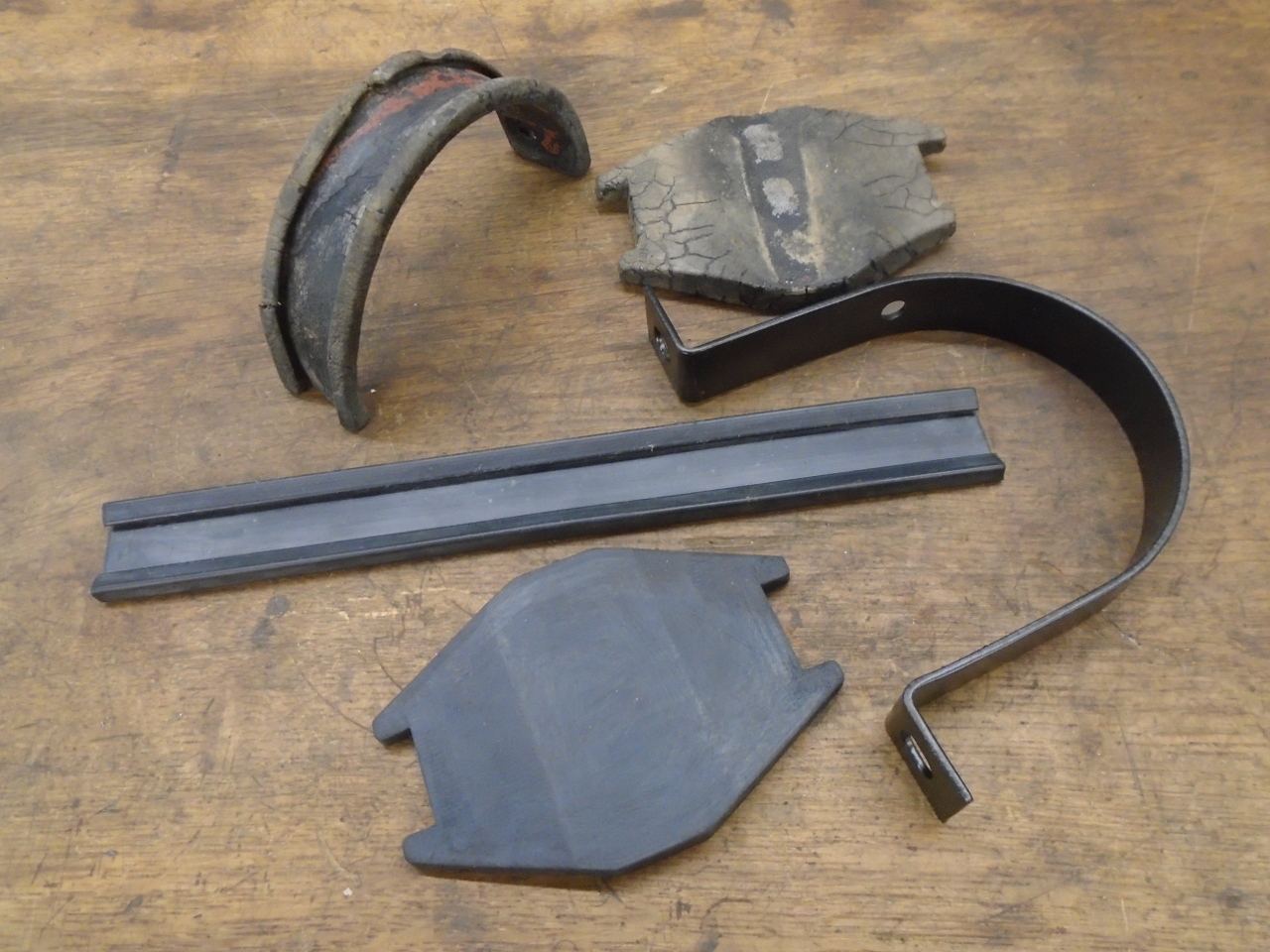
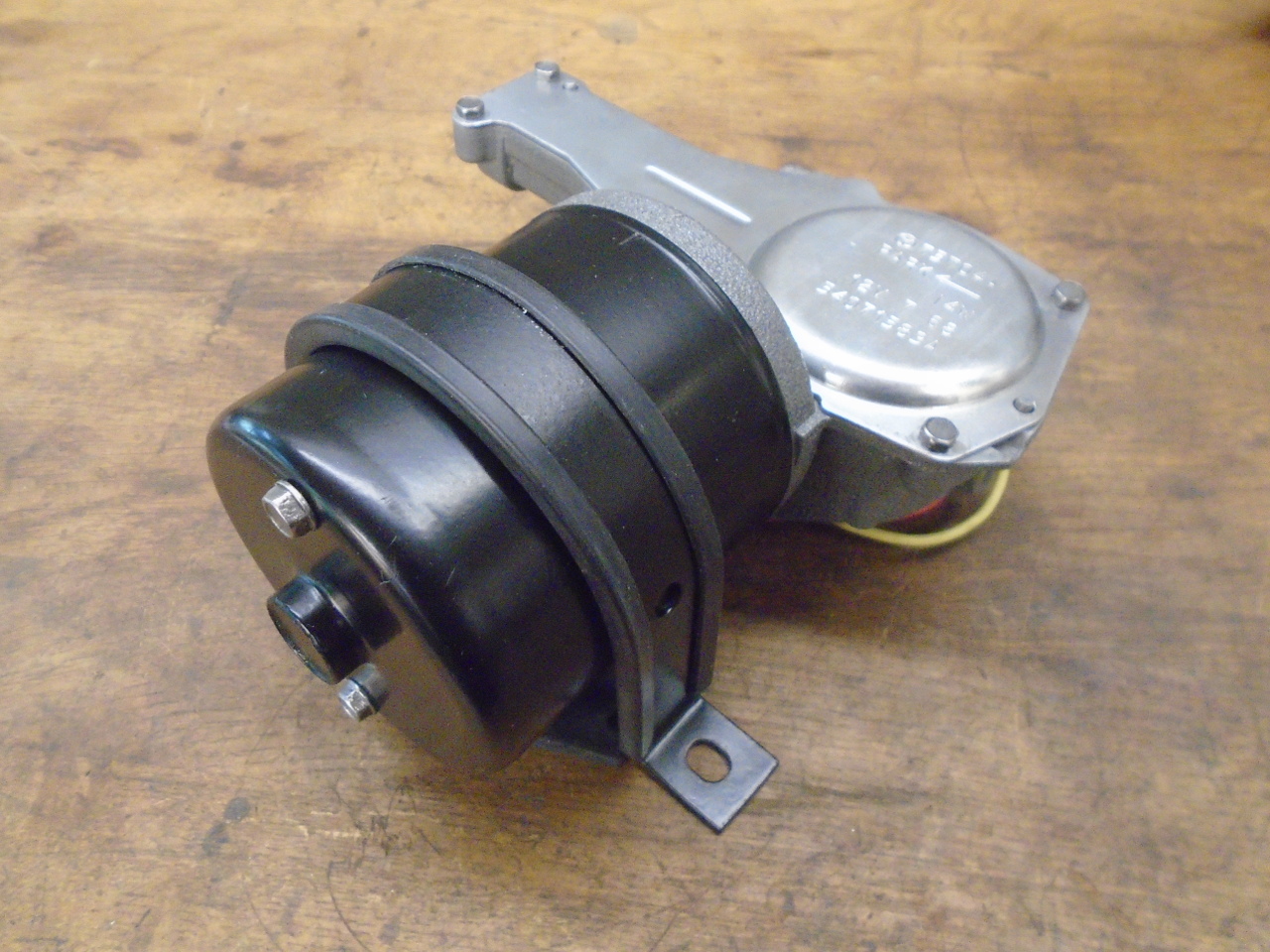
This project was maybe more trouble than it was worth. On
the up side though, the cost was only around $50, and I acquired
a new skill.
Comments to Ed at elhollin1@yahoo.com
To my other GT6
pages